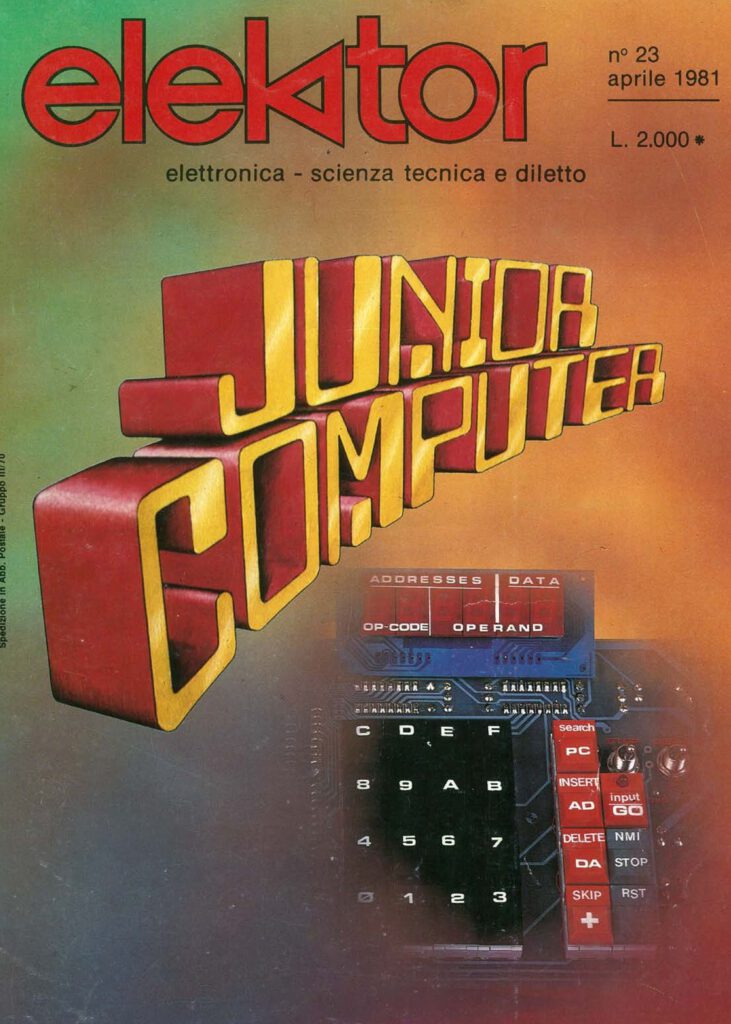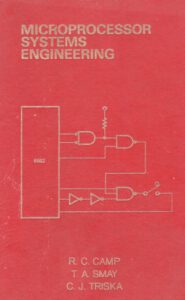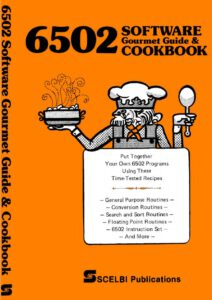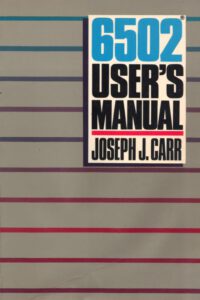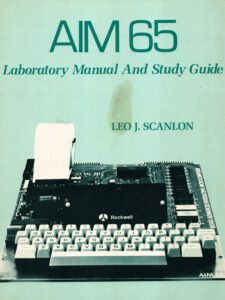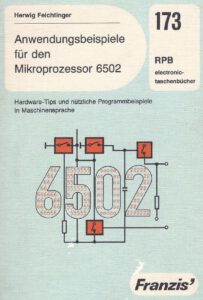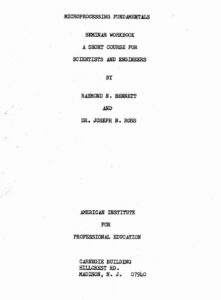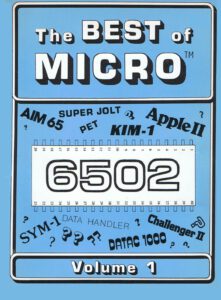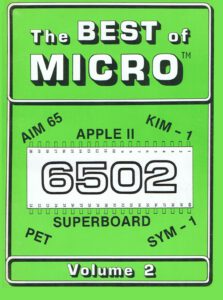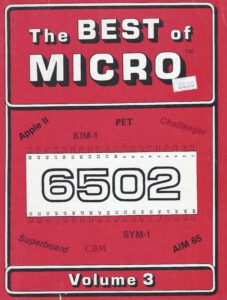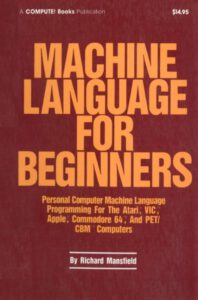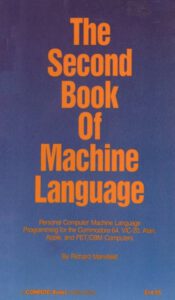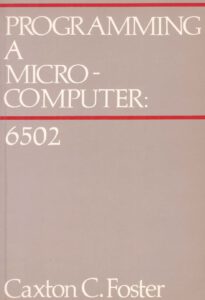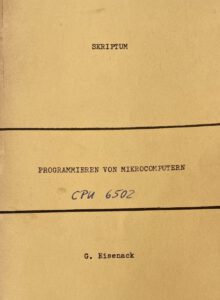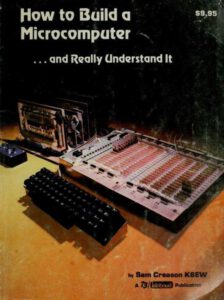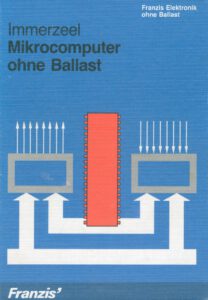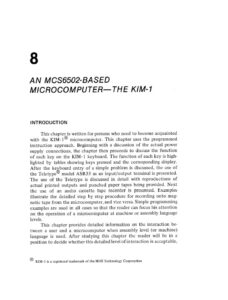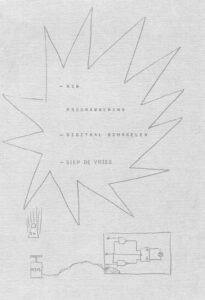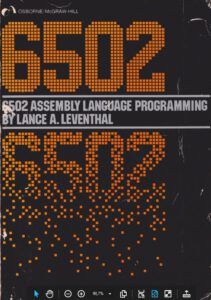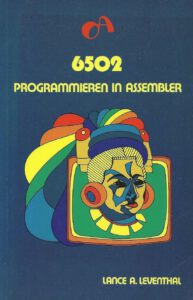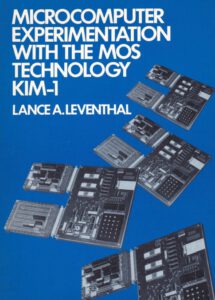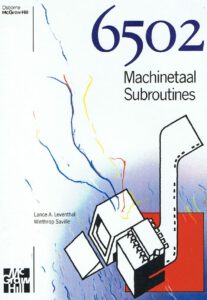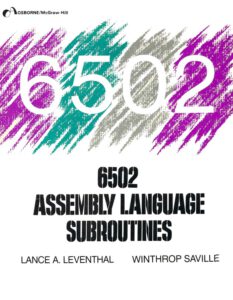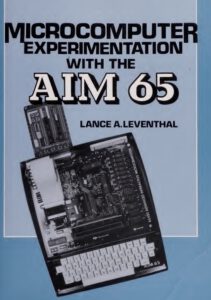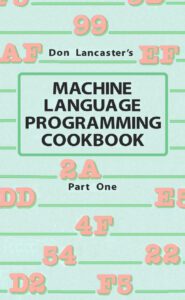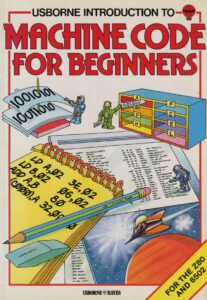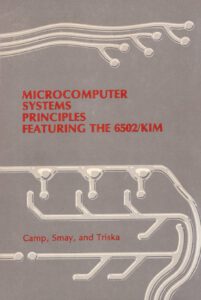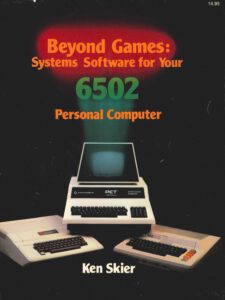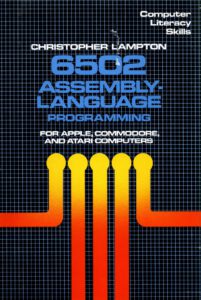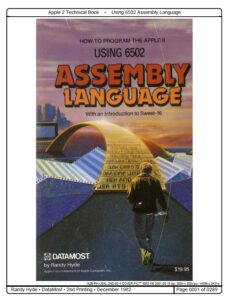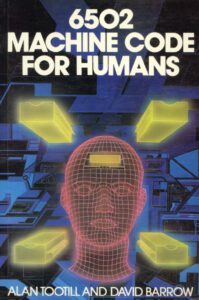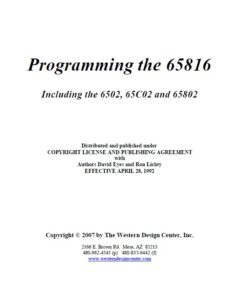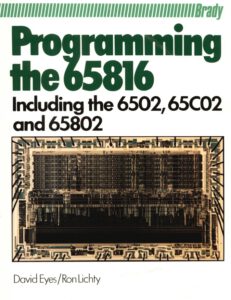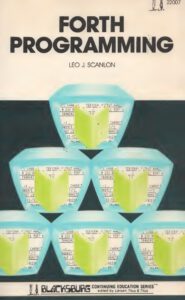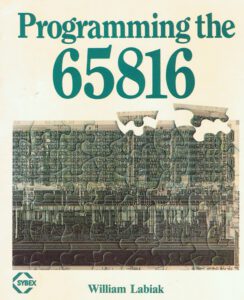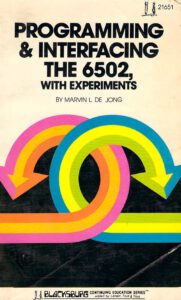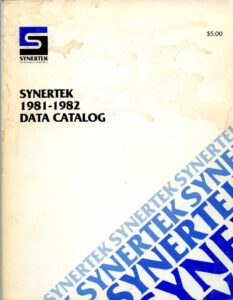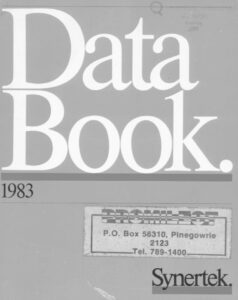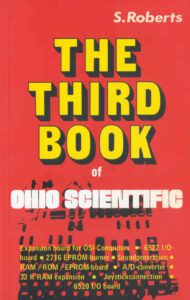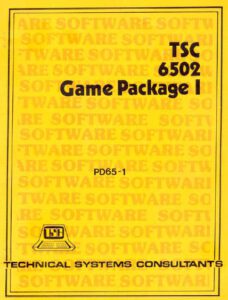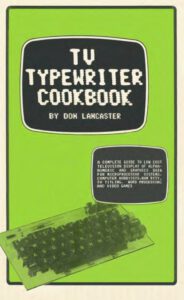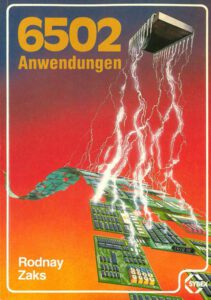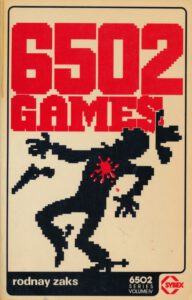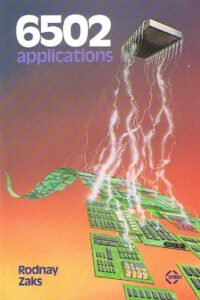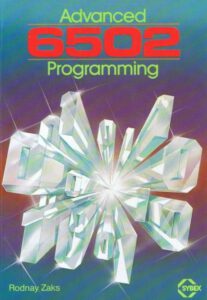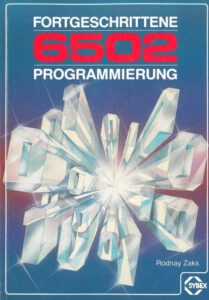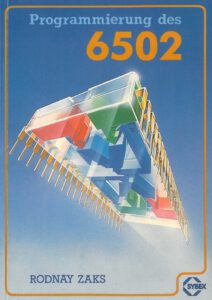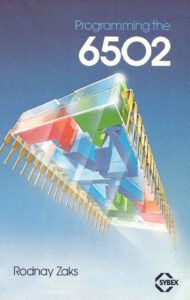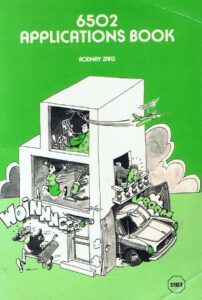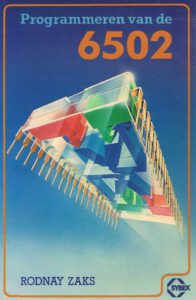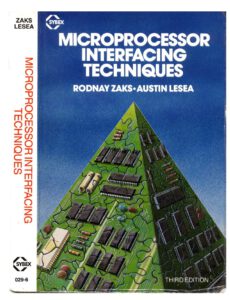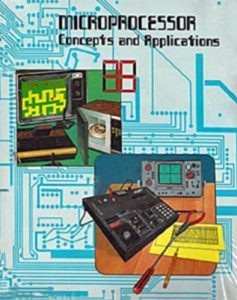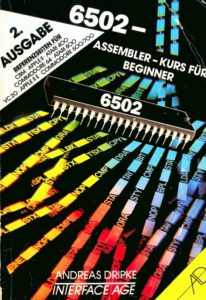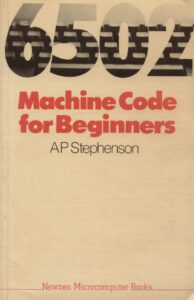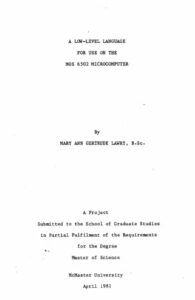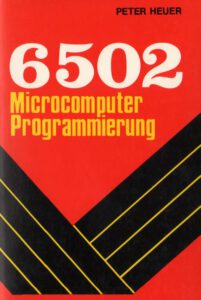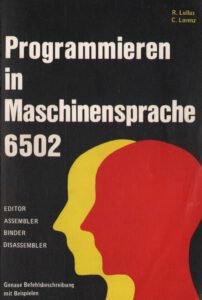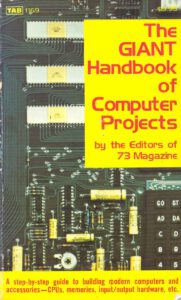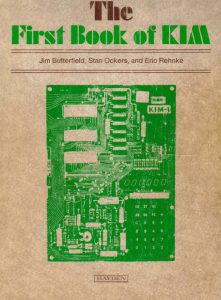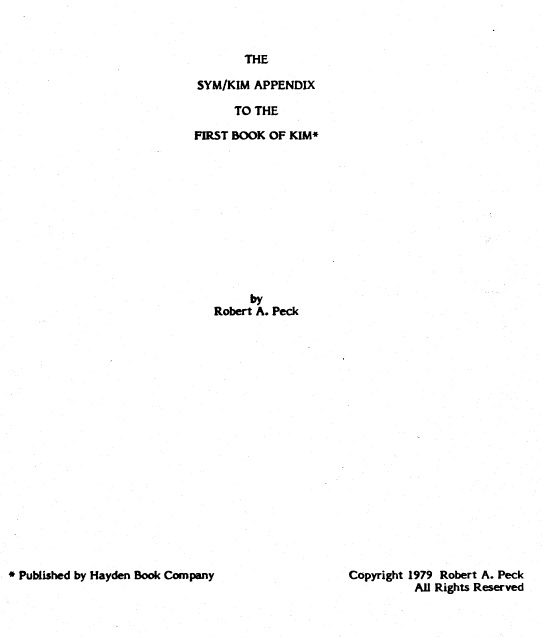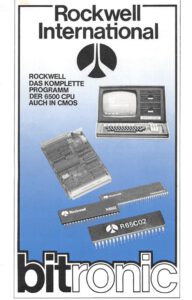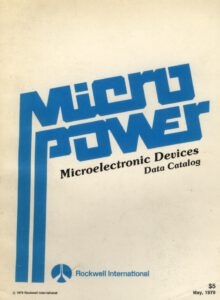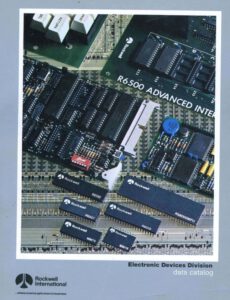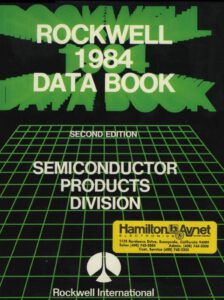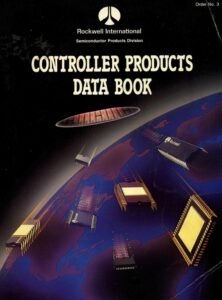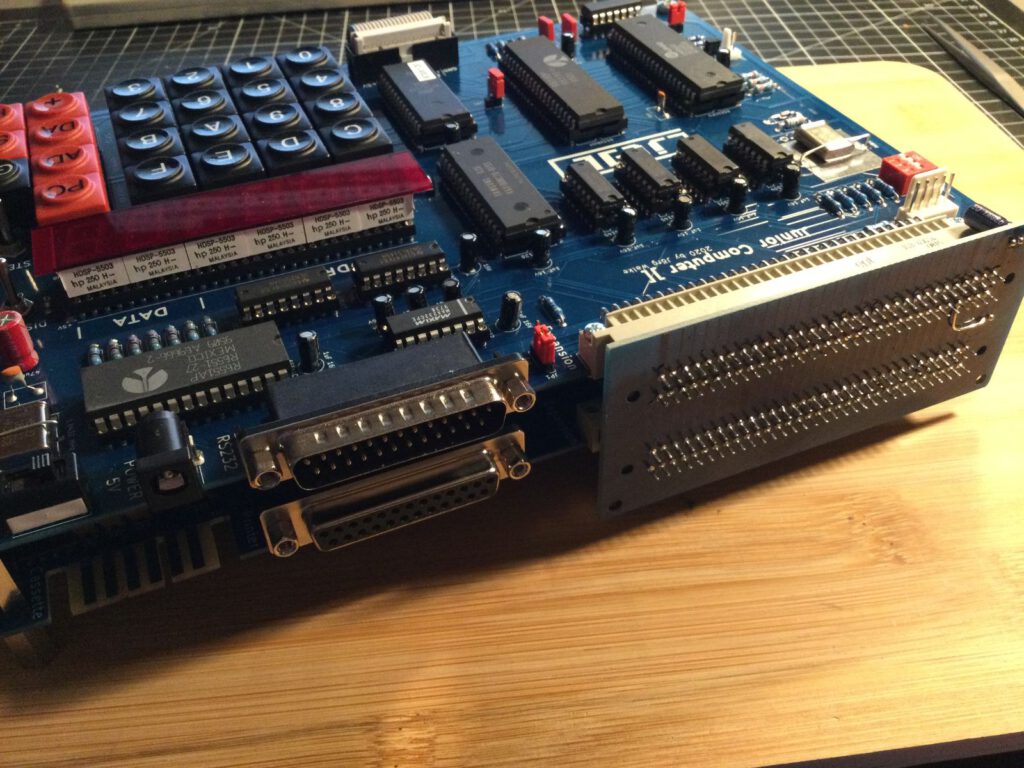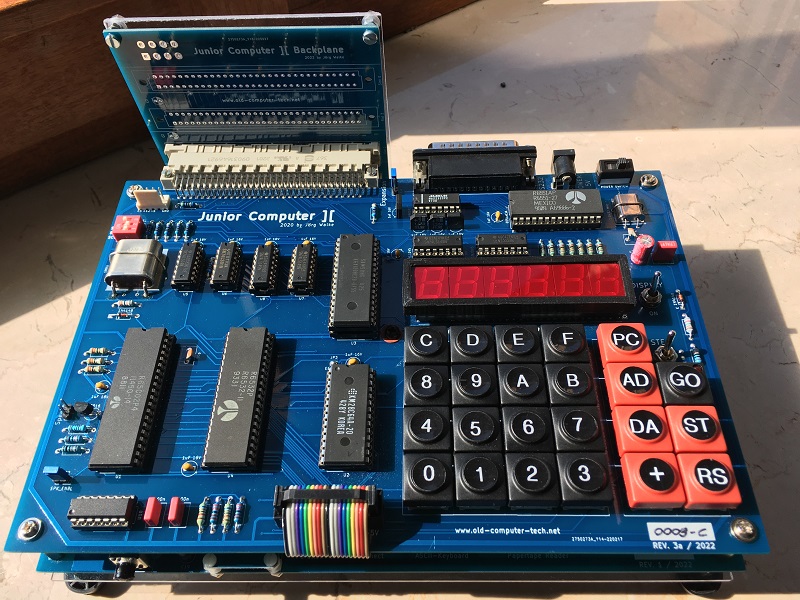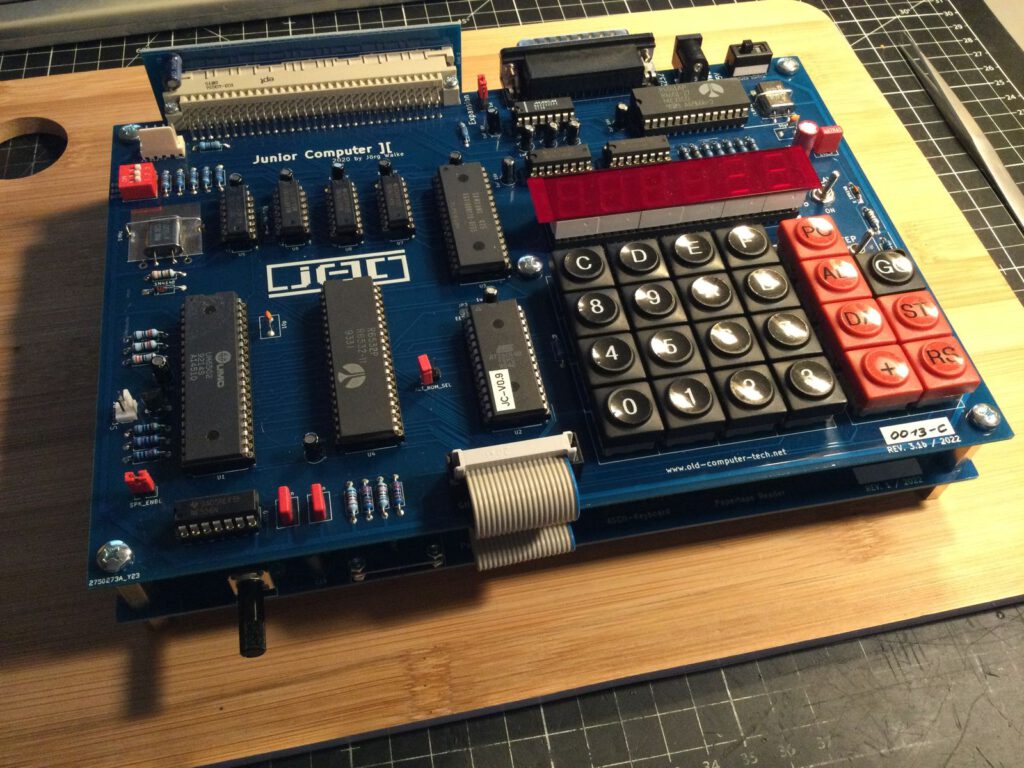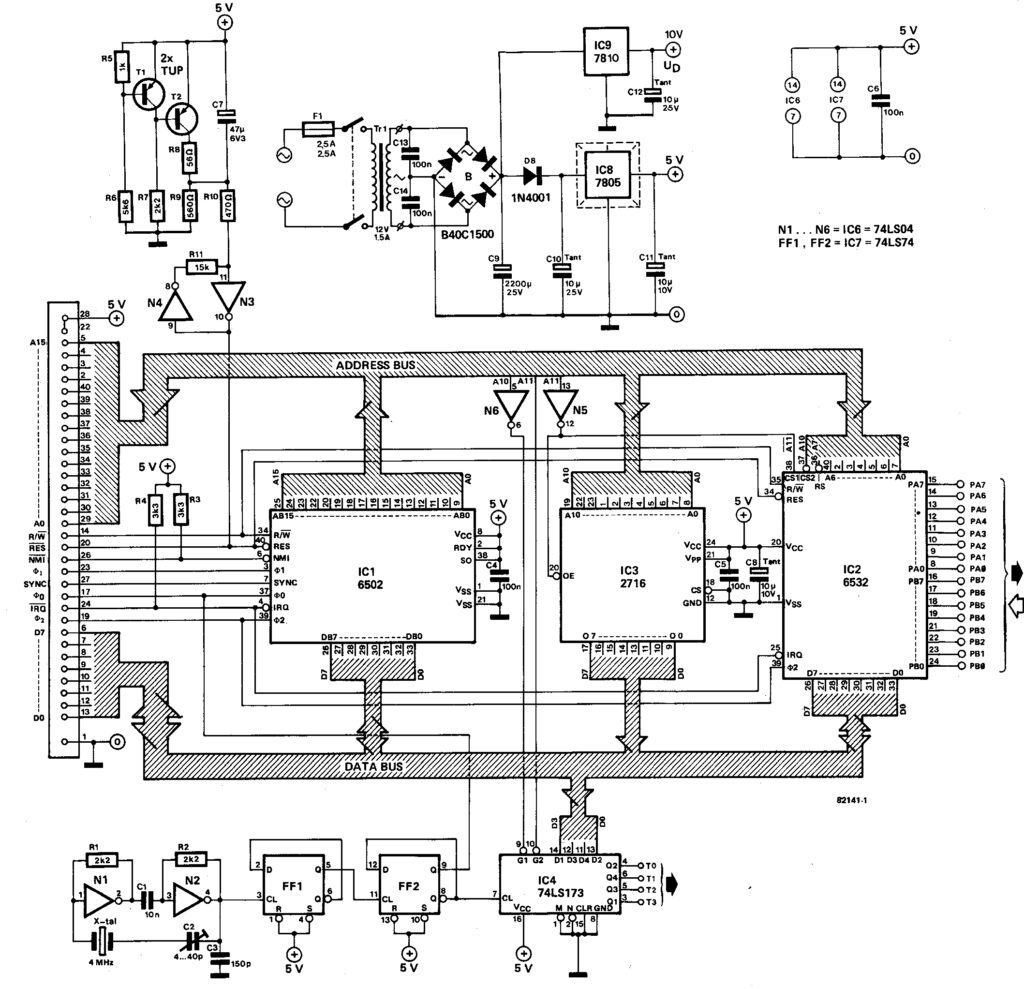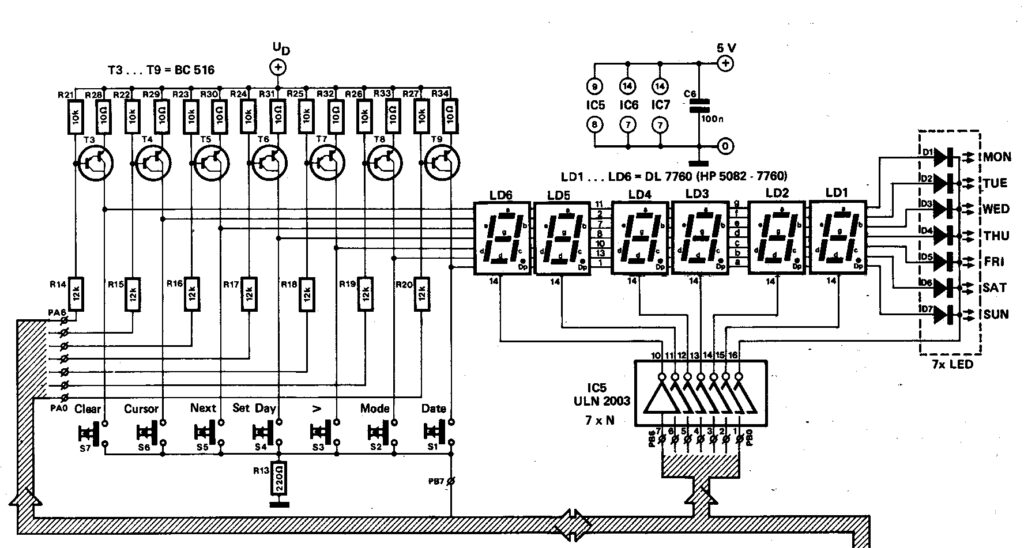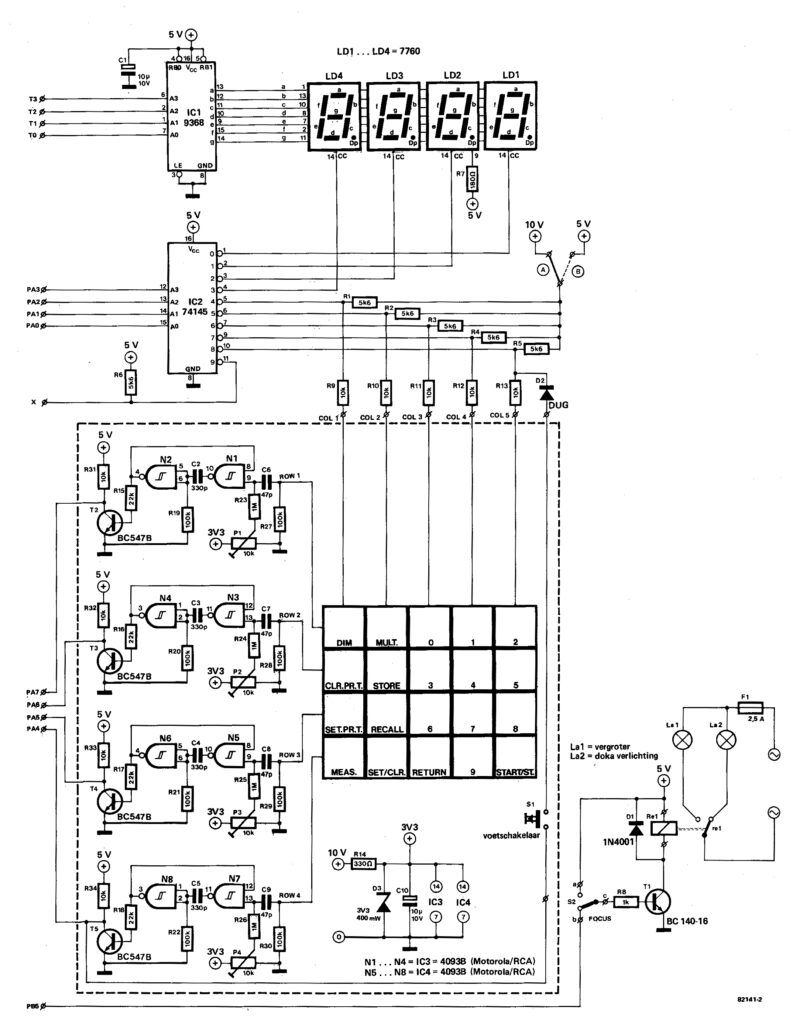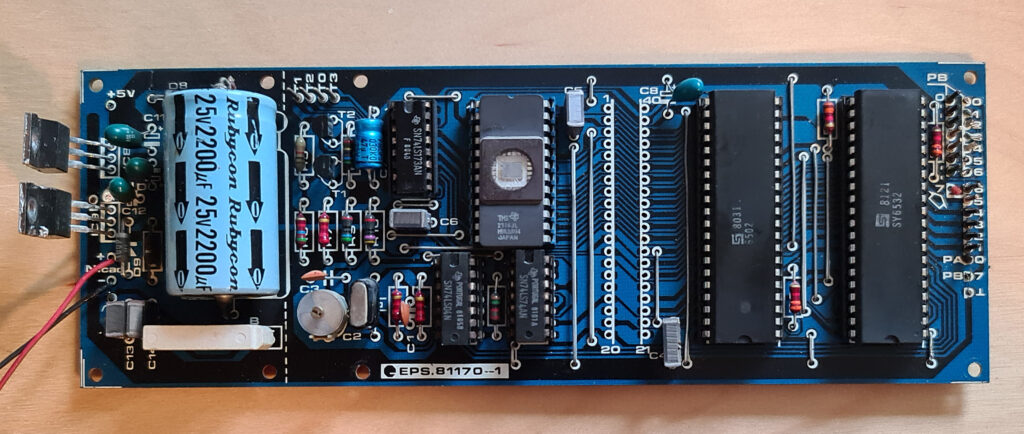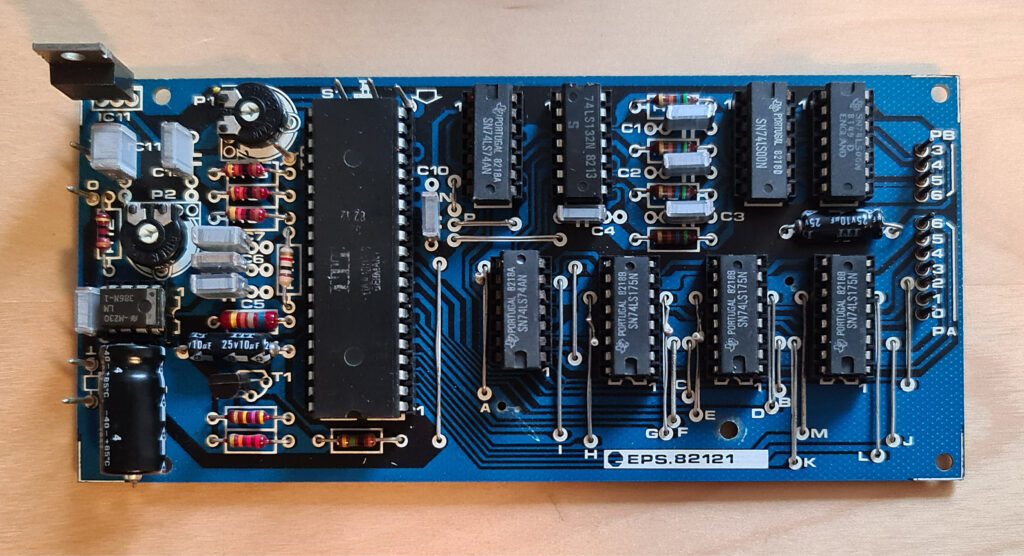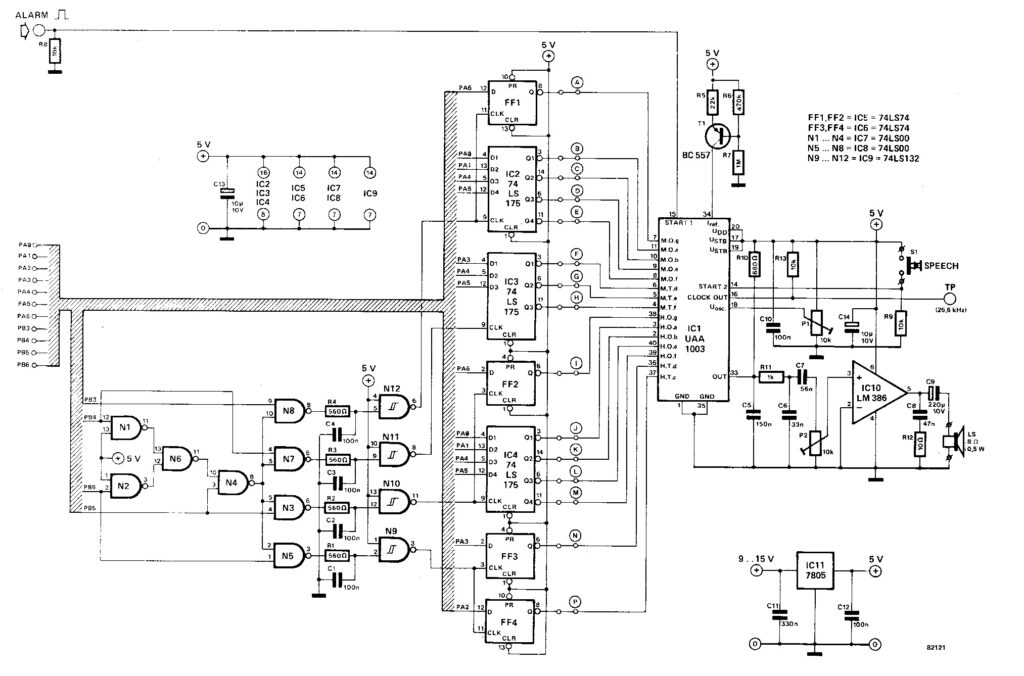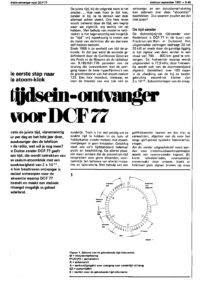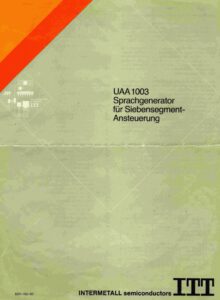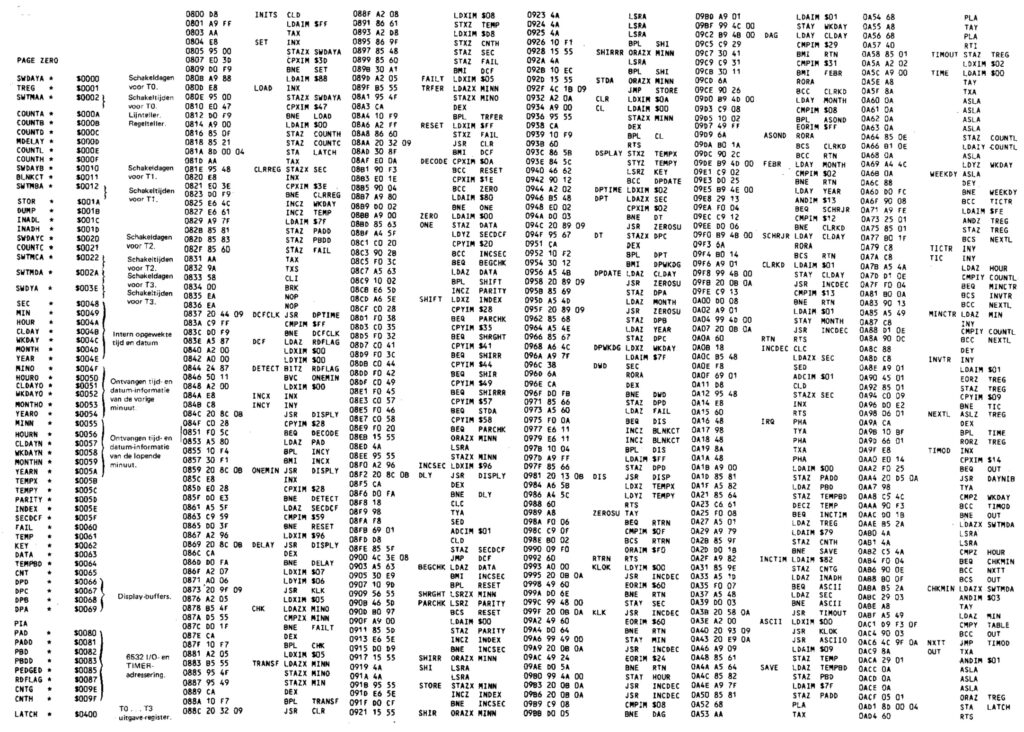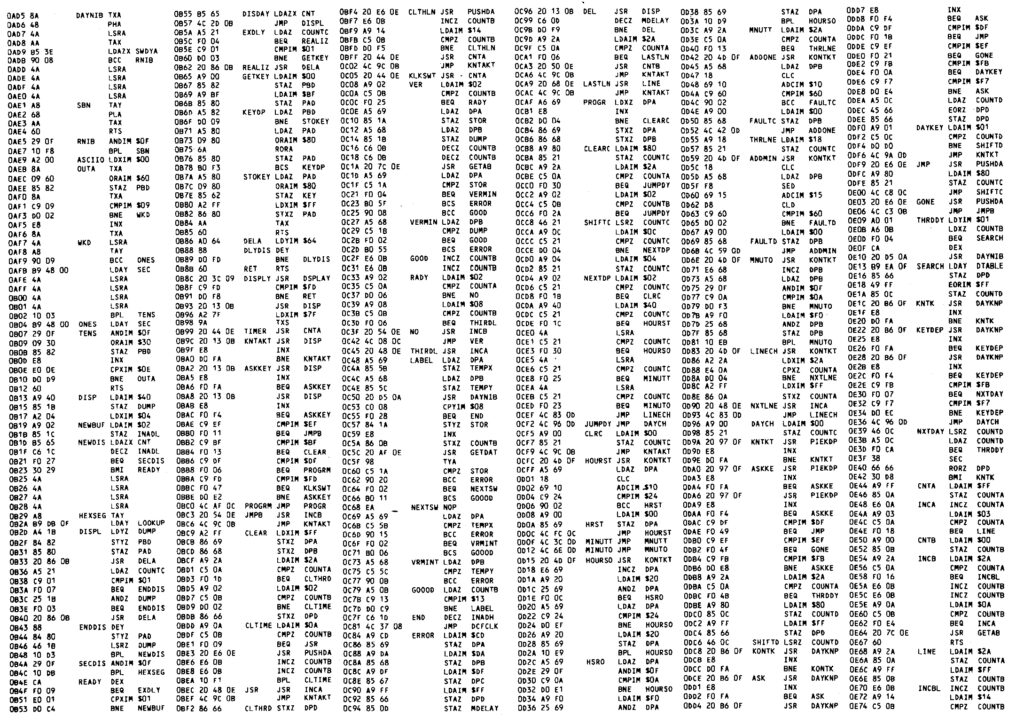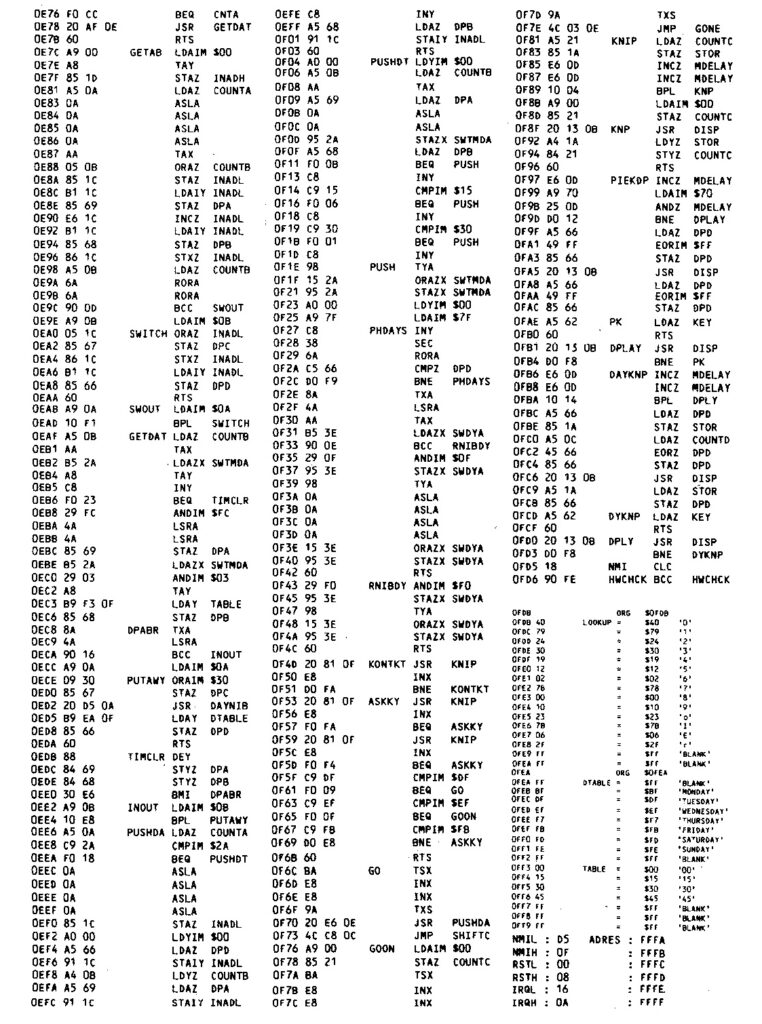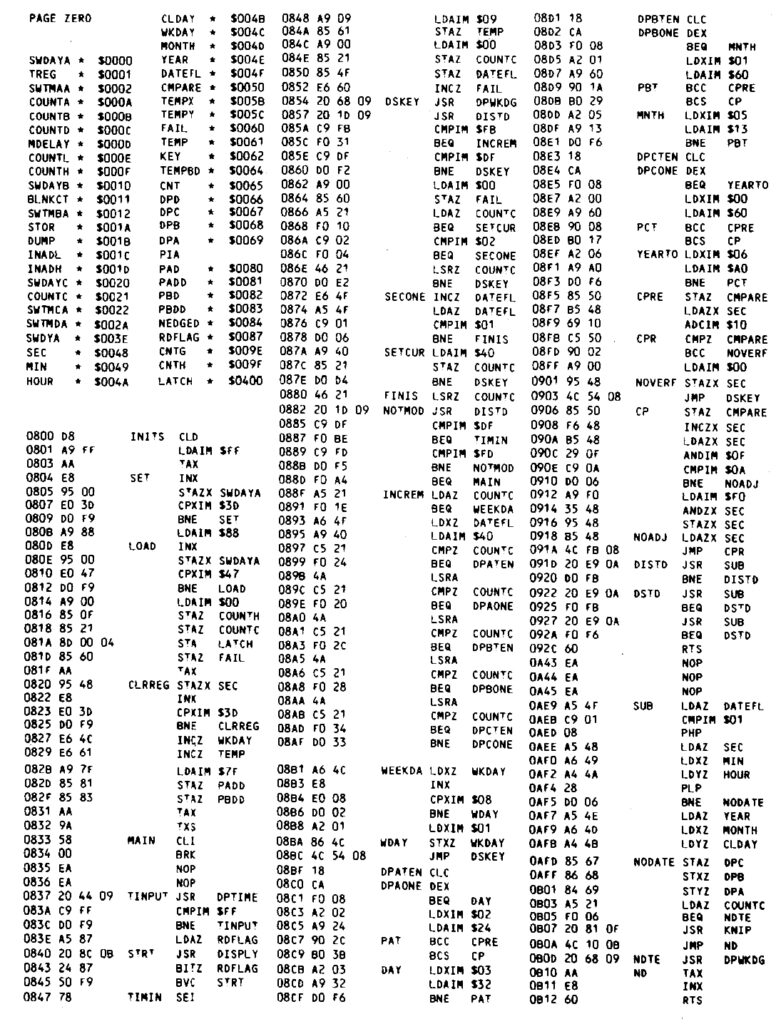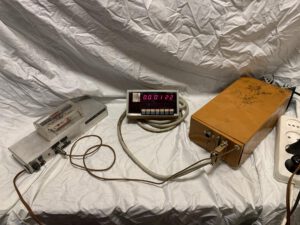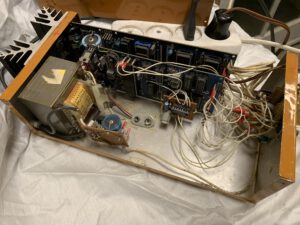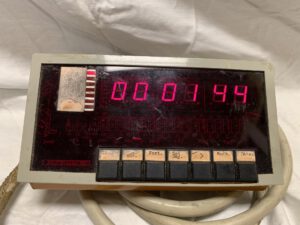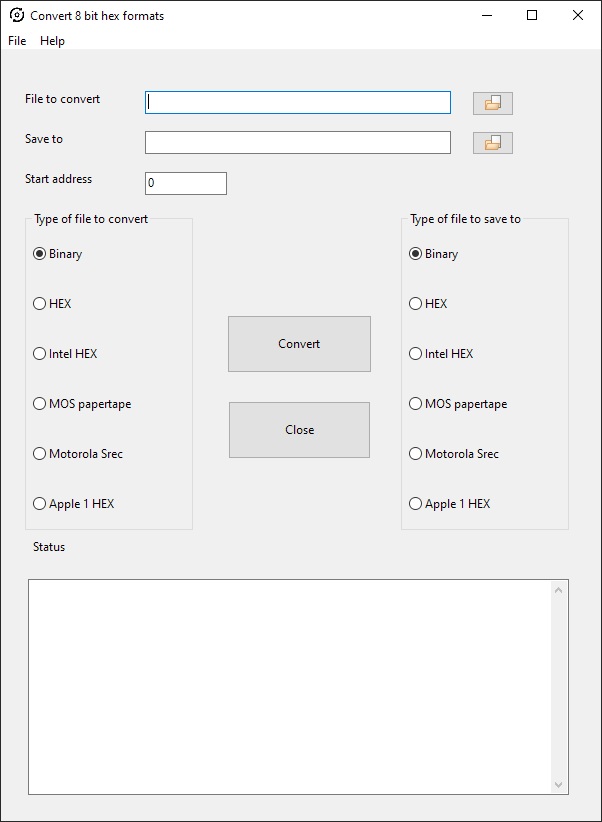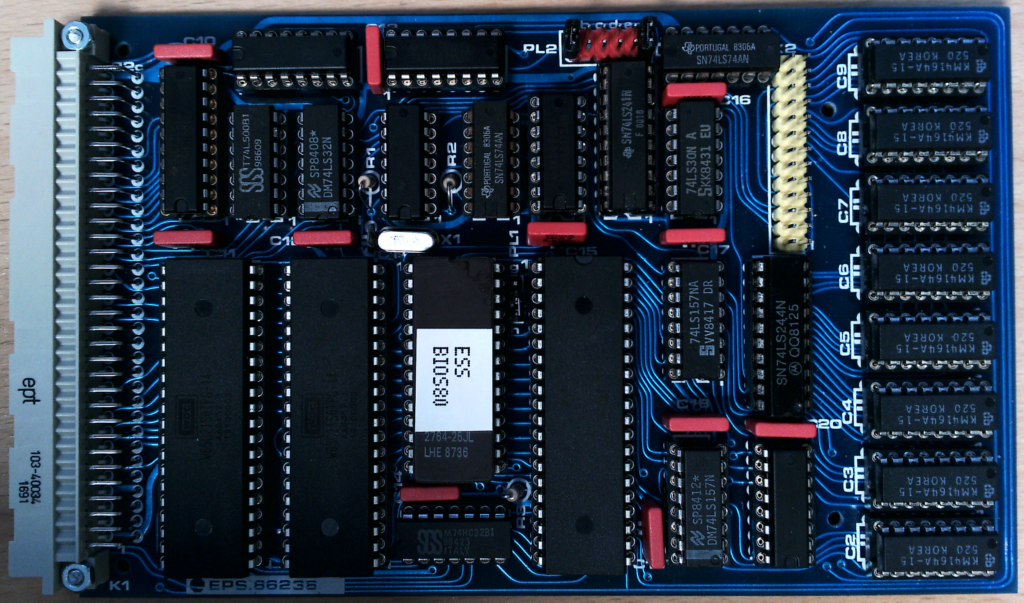Category Archives: elektor
Junior in KIM Kenner and Comp User
The Dutch KIM User Club published many articles by users on thet Elektor 6502 systems, like the Junior.
4 “De Junior” door Anton Muller KIM KENNER 13 – 18 oktober 1980 4 Hex teller en flip flop voor de Junior, J. Hummeling KIM KENNER 14 – 20 december 1980 4 JUNIOR, H.J.C. Otten De 6502 KENNER nr 15 maart 1980 13 Ervaringen met de JUNIOR J. van Sprang en W.L. van Pelt 24 Ervaringen met de Junior, W. Van Pelt en J. van Sprang De 6502 KENNER 17 – augustus 1981 12 Ervaringen met de Junior, Willem van Pelt en John van Sprang De 6502 KENNER 19 – december 1981 Schrijf- en lees routine voor de Junior, Dick Blok De 6502 KENNER 20 – februari 1982 LUSTRUM nummer 79 SYM Microsoft Basic aangepast voor de Junior, door Jaron Orenztajn 36 Junior’s aan de PET, door Ruud Uphoff De 6502 KENNER 22 – Augustus 1982 12 Patches op KIM-1 Basic t.b.v. de Junior, door Van Nieuwenhove Koen De 6502 KENNER 23 – Oktober 1982 11 Patches op KIM-1 Basic t.b.v Junior (deel 2), door Van Nieuwenhove Koen De 6502 KENNER 24 – December 1982 14 Patches op KIM-1 Basic t.b.v Junior (deel 3), door Van Nieuwenhove Koen De 6502 KENNER 25 – Februari 1983 6 Patches op KIM-1 Basic t.b.v Junior (deel 4, slot), en bugs in deel 1,2 en 3, door Van Nieuwenhove Koen 4 ReNr en Append voor de SYM-Basic voor Junior De 6502 KENNER 27 – Augustus 1983 3 Proton’s JUNIOR DOS De 6 Grafisch display voor Junior, door H. Christen De 6502 KENNER 29 – December 1983 21 Read Junior’s SYM-Basic cassettes with Microsoft KB9 Basic De 6502 KENNER 30 – Februari 1984 8 Usurpator, schaakprogramma voor Junior, Fridus Jonkman 21 KIM-1 en Junior KB-9 Basic Tokenized Microsoft Basic Keywords and addresses, Willem L. van Pelt De 6502 KENNER 33 – Augustus 1984 3 Epson FX80 printer routine for Junior with OS65D De 6502 KENNER 34 – Oktober 1984 36 Save en load routines PROTON DOS SYM-1 Basic op Junior, Frans Smeehuyzen De 6502 KENNER 35 – December 1984 5 Junior met VDU kaart Greedy spelprogramma deel 1, Phons Bloemen De 6502 KENNER 36 – Februari 1985 5 Junior met VDU kaart Het grafisch display, J.J.A. en J.A.J. Janssen De 6502 KENNER 37 – April 1985 17 Junior met DOSV2.0A Bug in Disc patches on ASSM/Ted, Hans buurman 11 Dubbele dobbelsteen Junior met PM Maarten Lamey De 6502 KENNER 39 – Augustus 1985 10 DOS65 JUNIOR, another DOS for the Junior, Coen Kleipool De 6502 KENNER 40 -Oktober 1985 39 Junior in Apple, Frans Verberkt De 6502 KENNER 41 – December 1985 6 Basic teksteditor OHIO DOS Junior, Maarten van Hitum De 6502 KENNER 42 – Februari 1986 9 Real-time clock voor de Junior, Clock IC MC146818, M.J. Stiphorst De 6502 KENNER 43 – April 1986 16 65(C)02 Vervanging 6502 in Junior, Jan Vernimmen 1 Inhoudsopgave De 6502 KENNER 45 – Augustus 1986 3 Elektors EC65 Starcatcher Basic game De 6502 KENNER nr 46 – october 1986 5 Block graphics on EC65: screendump, Leif Rasmussen De 6502 KENNER nr 47 – December 1987 4 Hardware adjustment Junior/Octopus with VDU card for use as a videotext terminel Prestel standard, Coen Boltjes De 6502 KENNER nr 48 – February 1987 5 Videotex program for the Junior Octopus, Coen Boltjes De 6502 KENNER nr 49 – April 1987 7 EC65/Octopus Screendump for Kolorator, Leif rasmussen De 6502 KENNER – nr 50, Juni 1987 4 Fast alternative for the slow Junior cassette interface and software, Hans Christen De 6502 KENNER nr 51 – Augustus 1987 9 EC65/Octopus cassette motor control and Bell hardware, Marc Lacheart De 6502 KENNER nr 52 – October 1987 25 EC65 EPROM disk loader De 6502 KENNER 53 – december 1987 30 EC65 Modified version of Elektor’s listing stopper De 6502 KENNER 57 – Augustus 1988 34 DOS Errors in words EC65 28 EC65K EPROMs programmeren COMPUSER Volume 1 Nr 2 March 1988 16 Screen noise on Junior with VDU: synchronize CPU and VDU COMPUSER Volume 1 Nr 5 March 1988 COMPUSER Volume 2 Nr 1 January 1989
6 Ervaringen met de Junior computer, W.L. van Pelt
8 One armed Bandit voor de Junior, F.J. Butterfield
12 Ervaringen met de Junior, J. van Sprang en W.L. van Pelt
14 Junior leesroutine voor Kansas City cassette interface, Sebo Woldringh
16 Junior schrijfroutine voor Kansas City cassette interface, Sebo
15 Letters en cijfers op JUNIOR display J. Hummeling
26 Automatische register uitlezing voor de Junior
39 Browse voor de Junior
15 Rapportcijfer, Rein Duyts
22 Display op oscilloscope, C. Totte
28 Aanpassingen aan de Macro Assembler van C.W. Moser, van Nieuwenhove Koen
34 Patches op Basic, Hans Otten
35 Lichtshow voor de Junior en de KIM, K. Kikke
38 4 kolom printer, A.S. Hankel
40 Printer routine voor H14, Paul de Beer en Hans Otten
43 Break voor Junior en KIM, Frans Mepschen
81 Aanvullingen voor de Elektuur EPROM programmer, door John van Sprang
85 Aanpassingen Junior print voor 2716, door J. Vollering
86 Bugs
87 Patches Micro Ade deel 11 voor de Junior, door A. Hankel
91 Voedingsschema voor +5V, +12V en -12V. door Frans Smeehuizen
92 Memory test aangepast voor de Junior, door Bert van Tiel
25 R.T.T.Y. met Junior, Telexberichten via korte golf op uw scherm, door A.S. Hankel
32 Easy Editing Supporter v. Junior, door R.C. Vissers
40 Simpele geheugenuitbreiding, door H. Burgers
43 Single Step Debug Programma, door M. A. v.d. Laan
46 Tiny Basic voor Junior + cassette routine, door Filip van Kenhove
4 Cassette bibliotheek, Junior cassette 2
24 Junior en dubbel adressering VIA 6522, door Koen van Nieuwenhove
35 AIM-65 Basic voor de Junior, door E.J.M. Visschedijk
6 Maak van Junior een Senior: Disk drive Systeem van Proton op Junior, door P. Franssen
16 Printen op OKI Microline 80 Printer, een nieuwe printer routine voor Junior
3 Spiraal (KIM) nu voor Junior
19 Koppeling van Junior aan 8″ Floppy, met FD1771 controler 8″ single en 5″ double density, door Koen van Nieuwenhove
41 UART schakeling voor Junior, door A.A. Zwart
22 Toevoegen niruwe commando’s aan de SYM-1 Basic voor KIM-1 en Junior, Frans Smeehuyzen
25 Vraag en aanbod
26 Automatisch regels verwijderen, Frans Smeehuyzen
28 Boekennieuws
28 Clear screen voor JUNIOR’s SYM-1 Basic, Will Cuypers
29 Tekstverwerker, naar een idee van M.A. van der Laan
31 Hexadecimaal omzetter, Dick Blok
33 Universele geheugenkaart voor Junior
33 KB9-Basic op Acorn SYSTEM-1
39 Junior’s Hex monitor on Acorn-System, Alfons van de Meutter
9 PACHA, patch on PM monitor, Fernando Lopez
11 Bouw eens een Miljonair: 2 miljoen bytes voor uw Junior, Jam H. Vernimmen
17 Program cassette 1: Junior/Apple formaat cassette routines deel 1, A Brouwer
34 LED’s op Junior, Hans Buurman
37 Uitbreidingen op SYM-1 Basic voor KIM en Junior: automatische regelnummering, Frans Smeehuyzen
39 Missing data in Junior Book 4
47 Load your Junior Sym-Basic Tapes into KB-9
28 Aanpassen regelbreeddte via het toetsenbord, Frans SMeehuyzen
47 Extended AIM Basic Junior patch on Basic program compressor
4 Tips & Trics, Wout van Dinther en Gerard van Roekel
29 Junior Command Characters, Coen Kleipool
34 Basicode-2 voor de Junior met SYM-Basic, Fridus Jonkman
36 Hexdump voor de Senior Monitor voo Junior met PROTON’s monitor, Rob Banen
44 UART schakeling voor Junior, A.A. Zwart
44 Textfiles with Junior, Camiel de Ly
8 Junior disassembler voor hexdisplay, Fridus Jonkman
17 Low cost Elekterminal Expansion, R. Baarslag
24 Spiraal, grafisch op Junior met VDU kaart, Japp van Toledo
33 Tracer en single step, voortzetting uitbreidingen SYM Basic op Junior, Frans Smeehuyzen
33 HEX ascii dump, FORTH Gert Klein
39 Wallbreaker for Junior with OHIO-DOS, Willem Kuitens
42 Maanlander, Maarten van Hintum
44 Junior 8K of Junior 64K, Hans Mooi
48 Junior met D.O.S, Koen van Nieuwenhove Speed
21 FORTH op Junior deel 1, Gert van Opbroek
24 OHIO DOS V3.3 Aanpassen I/O routines, Wout van Dinther
24 How to change the Memory Map of your FORTH system on Junior
45 FORTH op Junior computer, Gert van Opbroek
22 ID en KB-9 Microsoft Programs, Camiel de Ly
23 VIA ACIA print, M.A. van der Laan
32 Patches op PM Junior
40 Sorting subroutine Junior Fernando Lopez
12 Boekbespreking
13 Time of day, de 6526 nader bekeken, Ruud H. Uphoff
18 Vraag en aanbod
19 Junior met OS65D V3.3 Uitbreidingen, Gert Klein
33 Junior Tape I/O, A.W. den Hertog
35 Ervaringen met de PC-2 computer van Proton Electronics
35 HCC Computerdagen 16/17 nov 1985 reductiebon
36 Tokenized Microsoft Basic Keywords and addresses CBM40XX, CBM 80XX, Nico de Vries
46 Automatische dataregel teller
47 FORTH op Junior deel 3, Gert van Opbroek
42 C64JUN, Junior leest C64 tapes, R.A.F. Bens
15 Screen editor V3.0 SCRED 3.0 Junior met VDU kaart voor Basic of Comal, B. de Bruine
15 Octopus 65, fout in publicatie FCU kaart Elektuur Special
24 Octopus 65 Let it be, Will Cuypers
26 GRAF V2.4 Routines grafische kaart, J.J. A. JAnssen
38 Basic programma Competitiestanden Handbal Elektuur Junior deel 1, Gerard Keet
17 Elektor’s octopus diskettes available
18 Basic competitie standen deel 2, Gerard Keet
23 Een wait ingang voor de Junior, Roger Langeveld
29 Octopus Diskette copier version 2.2, Wolfgang Tietsch
44 Bankswitching for the Junior, Fernando Lopez
2 Alternatieve Break routine tbv CPU kaart, Frans Smeehuyzem
4 Elektor’s OCTOPUS/EC65 computer: A data buffer as afterthought, R.T. Overakker
6 Problem with EC65 poweron reset, Siegfried Losensky
7 Elektor’s Octopus/EC65 Modified diskette copier version 2.2 part 2
18 Junior interface card en gewijzigde VDU card, Pieter de Visser
21 Junior POSVAL Chessmonitor for Elektor with hexdisplay, Frans Raaijmakers
21 EC65 Patch realtime clock
29 Printer initialisation for EC65, Leif Rasmussen
29 EC65 SAMSON tips, Leif Rasmussen
31 Basic competitiestanden part 3, printroutine voor teletype 110 baud
38 Junior with Proton’s Senior monitor modified format lister, Rob Banen
45 6845 geprogrammeerd
48 Delete character routines tbv de Elektor VDU card
42 Junior with VDU OHIO DOS NUMBERS routines to handle input of numbers from the keyboard
12 Realtime clock 146818 IC routines, Frenando Lopez
21 Elektor VDU card modification, J.C. Rix
22 New Centronic routine for Junior/Octopus 65, Coen Boltjes
25 Junior POSVAL Chessmonitor for Elektor with hexdisplay, Frans Raaijmakers
43 Basic competitie standen deel 4, Gerard Keet
46 Use of cursor control keys ED, Rene Hettfleisch
46 Octopus/EC65 disks
6 An interrupt decoder for the 6809, Andrew Gregory
8 8K RAM voor de Atom, Karel Odon
8 Patch on Dr Tietsch’s copier program, Marc Lacheart
9 A macro loader and Saver for ED DOS65, Bram de Bruine
11 Bitpatroon voorde C64, Gerard van Roekel
11 TIP: 0 in data regels plaatsen, Gerard van Roekel
12 Basicprogrammas’ combineren 2 en 3 letterwoorden, Gert Kwetters, Bart van Pelt
13 Junior bekent kleur, Phons Bloemen
17 Look at real contents Atari, Henk Speksnijder
17 Modification VDU card Octopus65, Albert v.d. Beukel18 Junior POSVAL schaakmonitor part3 end, Frans Raaijmakers
18 Junior Changing the 6502 by a 65C02. Jan Vernimmen
19 Troubles with Micro Ade and Elektor’s Octopus, Marc Lacheart
19 Solution of Micro Ade problem of contineous erros, Ronald Hermans
20 Junior malfunction Display, Ronald Hermens
21 Directory Disk1 ‘System Loys diskette’, Fernando Lopez
22 Bell routine for Octopus/EC65 with Basicode interface card, Coen Boltjes
22 Junior POSVAL wijizigingen in gepubliceerde listing, Frans Raaijmakers
23 Error messages Junior, adapted for Junior, Ronald Hermens
25 PL3/4 straps poblem CPU card, Frans Smeehuijzen
30 Patch in the Octopus/EC65 standard monitor, Marc Lacheart
30 Patches on Disk 5A (Original OSI V3.3) Marc Lacheart
31 Problemen met de Octopus65 met RS232 printer, J.A. van Eken
6 How to adjust the character generator for Videotex, Coen Boltjes
8 Junior Break key with serial keyboard, Gerard van Woerkom
12 Directory Disk 5a Ohio DOS
12 Junior dubbel adressering, Frans Bens
18 Tips and tricks for the EC65K/Junior, Coen Boltjes
19 MON65 op Junior, Erik v.d. Broek
20 The Junior Computer revisited, Fernando Lopes
28 Bell for EC65, Rasmussen and Lindstroem
32 Extension of OS-65D V3.3 with DEL command
38 Screen flickering, Andrew Gregory
38 Slave: bootstrap loader Junior, Ronald Hermens
39 TELEX programma MCB 1984, Marcel Breukink
44 Columns print for printing in two columns, Octopus, Leif Rasmussen
45 Hardcopy routine for Octopus, Coen Boltjes
26 Ascii dump with OS65D extended monitor, Gerrit van Woerkom
28 Working with Micro Ade and bankswitching on the Junior Computer, Fernando Lopes
11 Plotpoints Atari 520ST, Jan Vernimmen
16 Expansion for Ohio DOS Extensions, Coen Boltjes
25 EC65/Octopus How to get more memory space, Peter Linstrom
29 DOS65 ACIA 65C51 and modems. Bram de Bruine
31 Centronics input for DOS65 or Junior computer, Ernst Elderenbosch
32 How to modify the Elektor 64K memory card for use with DOS65, Andrew Gregory
33 Hoe wordt de video controller 6845 geprogrammeerd
39 Forth on the Junior, Frans Bakx
43 Maanlander Junior, Fridus Jonkman
46 Printer routine for Junior, Alfons v.d. Meutter
8 Solved problems Octopus vdu card monitor EPROM
19 Relocator for DOS Junior and Octopus 65, Coen Boltjes
21 RAM Test program for the Octopus 65, Marc Lacheart
36 Paperware service EPROM programmer for Junior, Andrew Gregory
17 EC65/Octopus Wordprocessor V3.0 available, Leif Rasmussen
17 EC65/OctopusPatch on Dr. Tietsch Copier program, P. Lindstrom, Leif Rasmussen
17 Printer problems with the Octopus, Maarten den Hertog
21 Loys extra, how to bind the systemdisk utilities, Leif Rasmussen
28 Junior tape routines on DOS65, Ernst Elderenbosch
26 Octofate: Fate for the Octopus, Coen Boltjes
26 Octopus inputverwerking, A.P. Oerlemans
27 EC65 EPROM disk directory
32 EC65 NUMINT basic
34 EC65 Language study help
37 Junior MAZE
17 A description of the DOS65 Disc format
24 Tape backup and restore utility OCTOPUS/EC65, Marc Lachaert
35 OHIO DOS V3.X special for Junior, Dirk Picke
1 Fractals in assembler EC65 Leif Rasmussen
14 Transfer OCTOPUS into a development system, Peter F. de Pauw
34 Read time and date EC65, Peter lindstrom
38 Junior DOS65 Erik vd BroekSee also:
Elektor Junior ASSM/TED
KIM-1 Macro Assembler Editor
MAE ASSM/TED CW Moser
SYM-1 RAE
Assemblers used in sources
You can assemble the sources with the assemblers with one of these fine assemblers:
- TASM Telemark assembler, runs on Windows 10 and 11. My favorite.
- A65 assembler, run in DOSBOX or VDOS.
- ASM.80 online assembler
- the assembler from the CC65 suite, powerfull but perhaps overkill for small programs
Other tools that may help you:
- binary file compare (I use freeware WinMerge)
- hex editor (plugin for Notepad++)
- convert between different 8 bit binary files format such as MOS Papertape, Intel Hex, Motorola S-Record, hex dumps. I use my own tool for that: Convert 8bit hex formats
Note that all these assemblers have a different idea about pseudo ops.
- Some require a ‘.’ in front of a pseudo-op like .org
- db, dw instead of .byte, .word
- > < to indicate upper or lower byte, TASM does not know this, use & $FF and >> 8 to mask of upper byte or move upper byte to lower byte.
- 0X or $ to indicate hexadecimal notation
Easy to edit with a Search and Replace usually.
TASM – Notepad++ integration
Install plugin NPPEXEC
- Place TASM in a folder on your disk, e.g. C:\TASM
- Create environment variable TASMTABS with value C:\TASM
- Add c:\TASM to the PATH
Create a NPPEXEC script:
tasm -65 -g3 -s -l -c -fff &quot;$(FILE_NAME)&quot; &quot;$(NAME_PART).bin&quot; &quot;$(NAME_PART).lst&quot; -s &quot;$(NAME_PART).sym&quot;
(-c to combine parts into binary file, -f to fill unused parts in binary with $FF, see TASM manual)
or to produce Intel hex for a programmer:
tasm -65 -x3 -fff -g0 -c -s &quot;$(FILE_NAME)&quot; &quot;$(NAME_PART).ihex&quot; &quot;$(NAME_PART).lst&quot; -s &quot;$(NAME_PART).sym&quot;
(-x3 to allow 65C02 instructions)
Now you can edit a source file, save it (CTRL-S), and press CTRL-F6 to execute the NPPEXEC script. The output of TASM is shown in the windows below the source.
If all is well, a Binary, a listing and a Symbol file is produced.
See also:
Elektor Junior ASSM/TED
KIM-1 Macro Assembler Editor
MAE ASSM/TED CW Moser
SYM-1 RAE
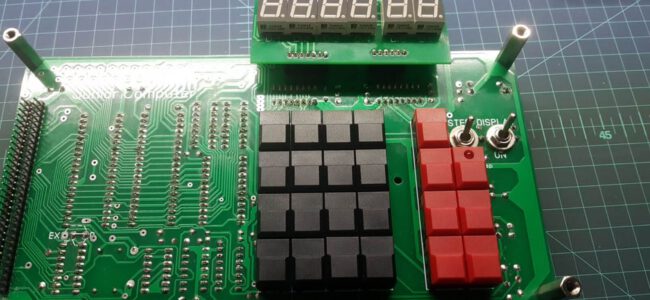
Junior PCBs by Werner Beukes
Text on this page and gerbers by Werner Beukes (original site disappeared late 2022)
The Junior Computer was published in the May 1980 issue of the Elektor magazine. Like many single board computers of that time, it was based on the 6502 microprocessor and the design was more or less the same as the Synertek SYM-1 and the KIM-1.
The Junior Computer was part of a bigger system and a year later in the May and June 1981 issues, the interface card was featured. This was followed by the floppy disc interface in the November 1982 issue. What is notable about this design, was that it did not use any of the exotic and hard-to-find floppy disc controllers (and expensive too).
Other cards that were published but not necessarily for use with the Junior Computer only, were the Universal Memory card (March 1983) – and Universal VDU card (September 1983).
The one thing that puts people off from building something like the Junior Computer, is the printed circuit board. It is no longer available through the Elektor’s PCB service and making one yourself from the layout in the article is just too much effort.
Well, I made building your own Junior Computer a lot easier. Using Sprint Layout 6.0, I replicated the designs for the Junior Computer, Interface board, Floppy Disc Controller, Universal Memory card and Bus board.
The Gerber files for these boards are available free for download and the printed circuit boards made from these files will result in boards which would be identical to the ones you would have received should you have ordered it from the PCB Service..
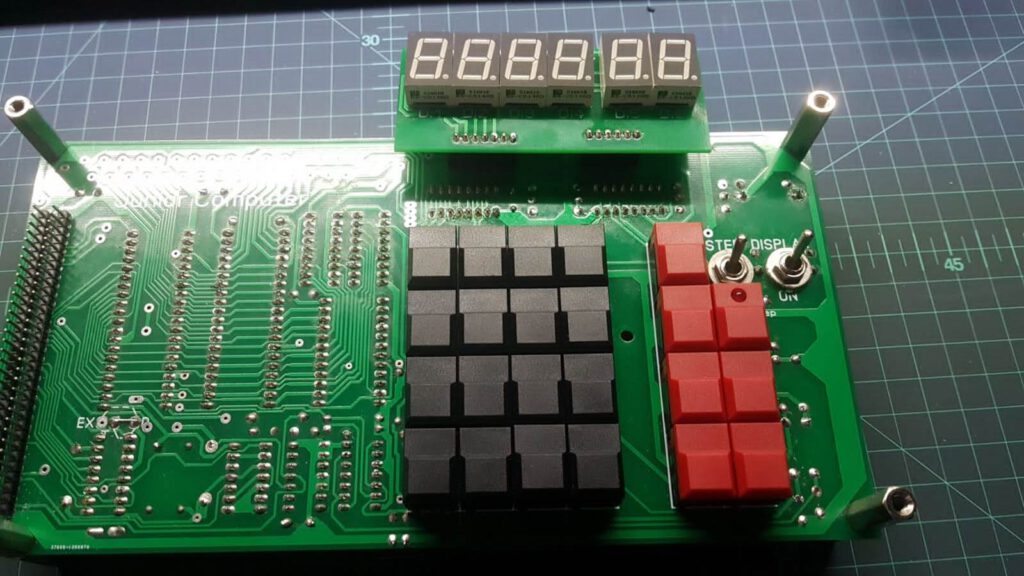
Downloads here:
- Original Junior Computer
This download includes all the Gerber files, the layout file - Modified Junior Computer
There are 2 modifications. The crystal replaced by 1MHz crystal oscillator and 2708 EPROM replaced by 2716 or 28C16 EEPROM. - Interface Card
Project published Elektor May 1981 and June 1981. This was extremely difficult to replicate as the artwork quality was very bad. - Floppy Interface Card
Project published in Elektor November 1982. Design does not use exotic (and hard to find) floppy controllers like the WD1770 etc. - Universal Memory Card
Article published in the Elektor of March 1983. - Bus Board
Required if you want to put a full system together. - Mini Bus Board
Couple Junior and Interface card. - VDU card with BNC
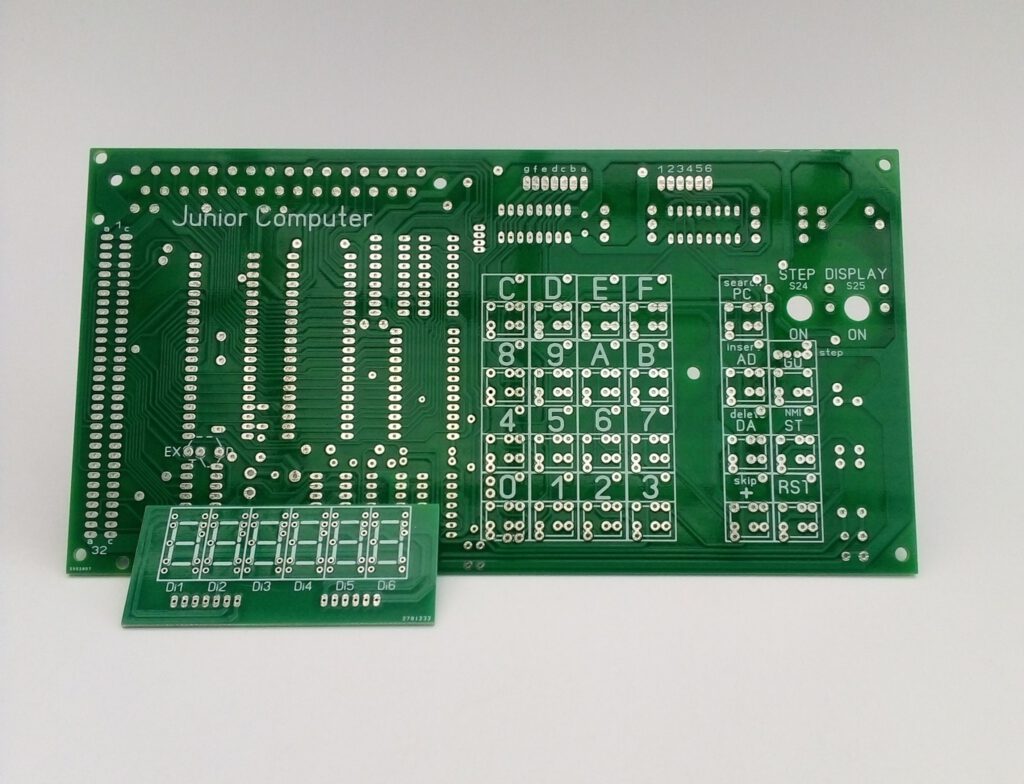
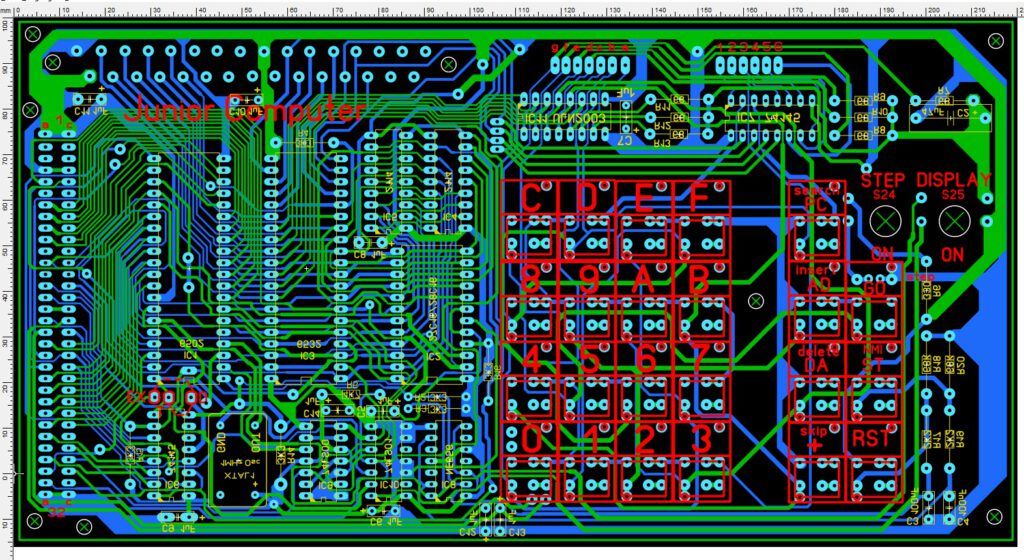
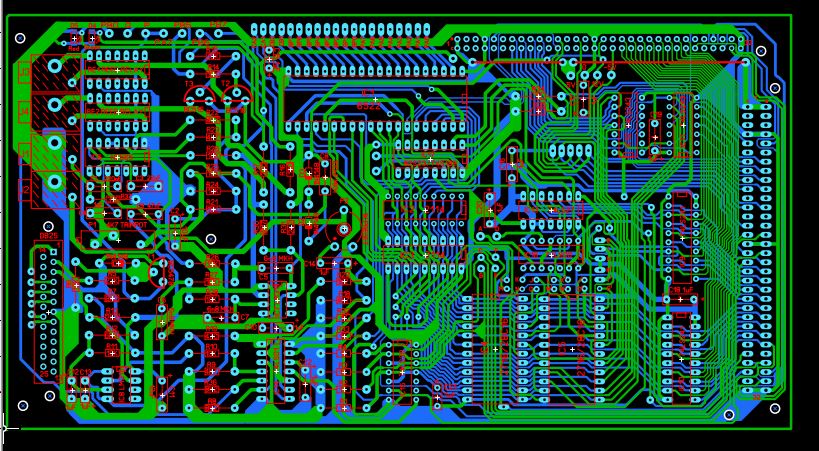
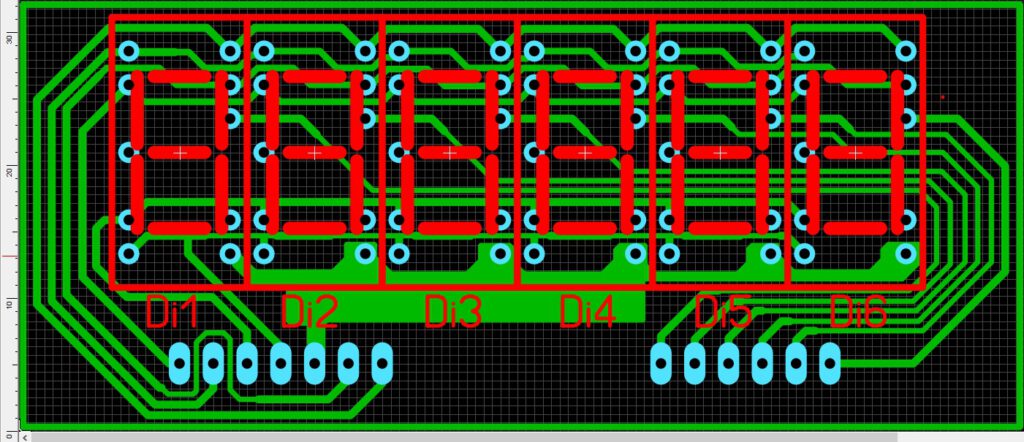
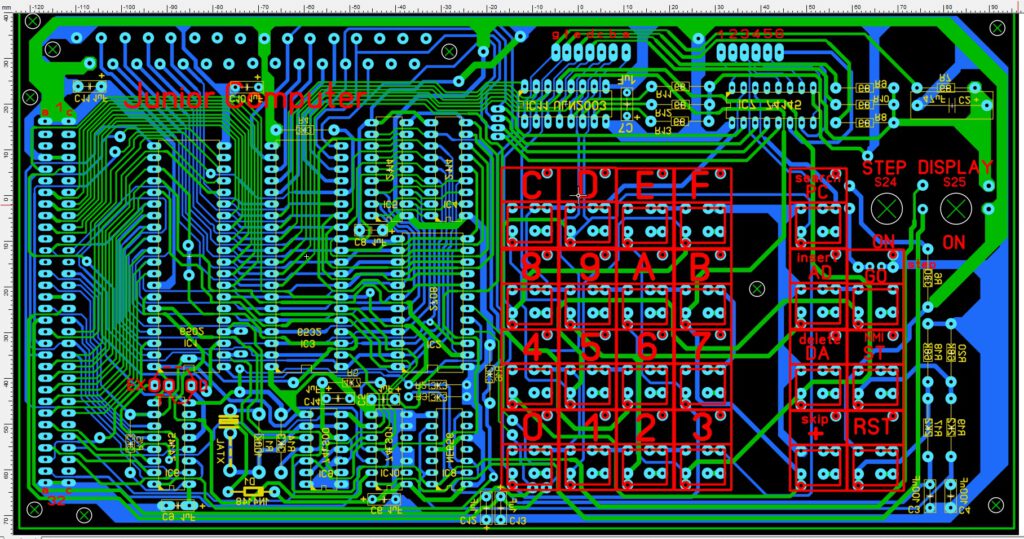
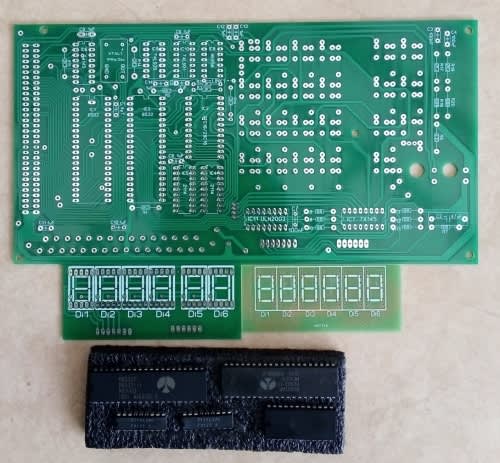
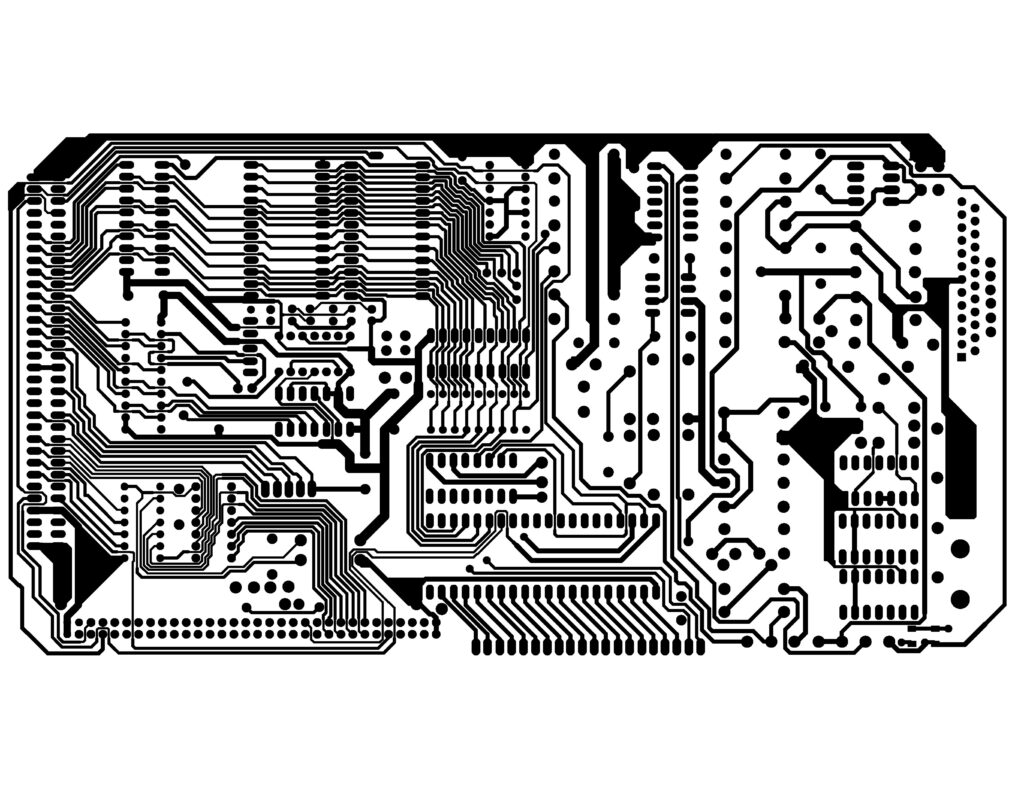
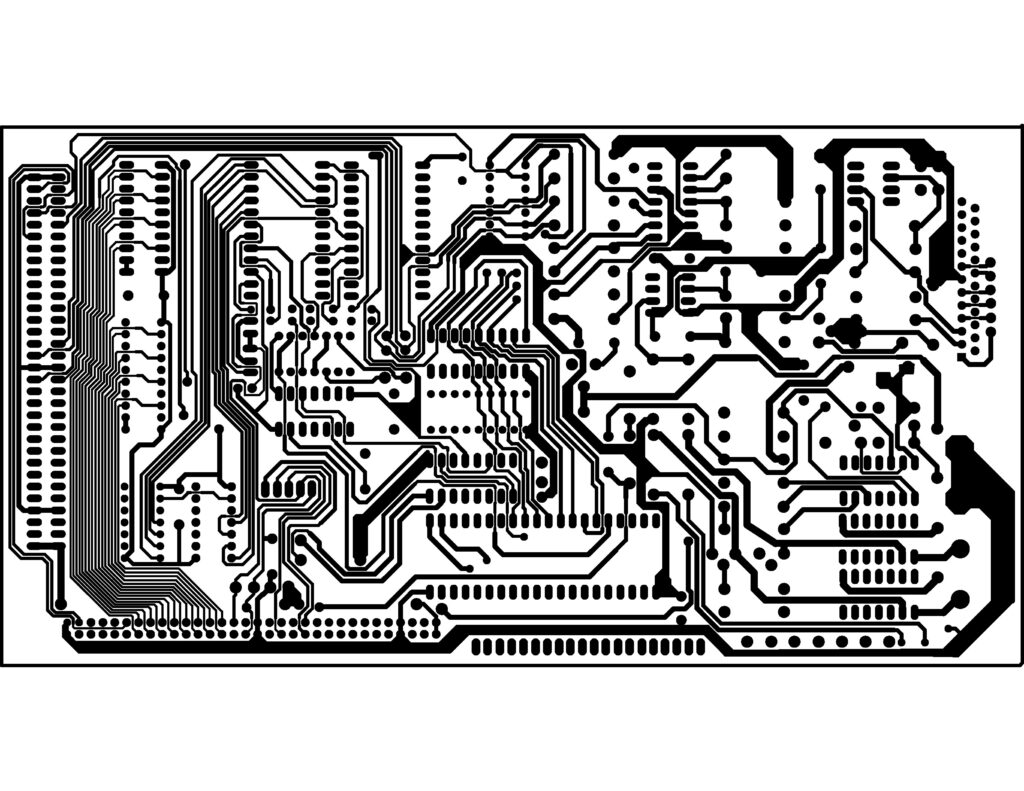
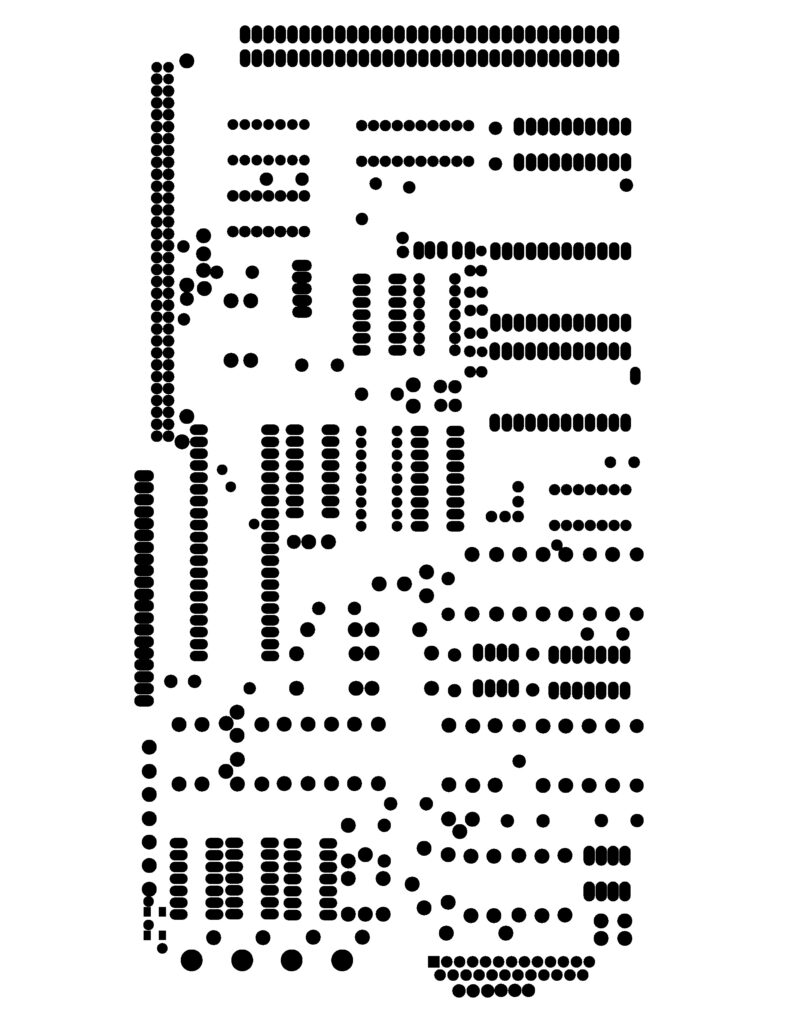
See also:
Elektor Junior ASSM/TED
KIM-1 Macro Assembler Editor
MAE ASSM/TED CW Moser
SYM-1 RAE
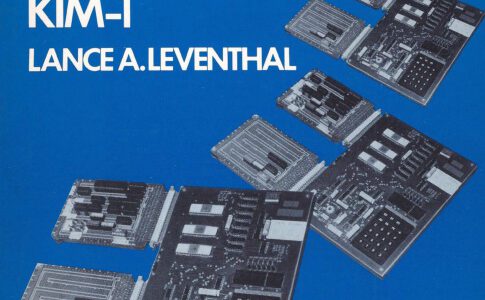
Books for the 6502: KIM-1 and more
KIM-1, AIM-65, SYM-1 and other 6502/65C02/65C816 related books.
A mix of English, German and Dutch books.
On my bookshelf I have quite a collection of books on the 6502 family.
Note that manuals and books that come with systems are shown on the pages of the corresponding system!
See also:
Elektor Junior ASSM/TED
KIM-1 Macro Assembler Editor
MAE ASSM/TED CW Moser
SYM-1 RAE
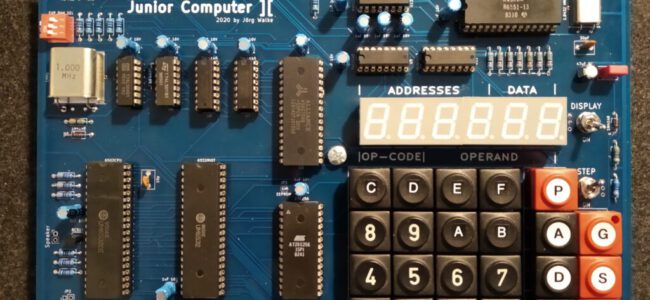
Junior Computer ][
Junior Computer ][
Written by 2021 by Joerg Walke, visit his webiste for the most actual version!
The Junior Computer ][ is an expanded version of the original Junior Computer. To make it more useful, I’ve equipped it with 32KB RAM, 8KB ROM and an onboard RS232 serial interface for connecting a terminal or a printer. For the use with a terminal, I also wrote an extended monitor program thats included in the bigger ROM. The development of the Junior Computer ][ is still in progress, so some other features will find its way to the mainboard.
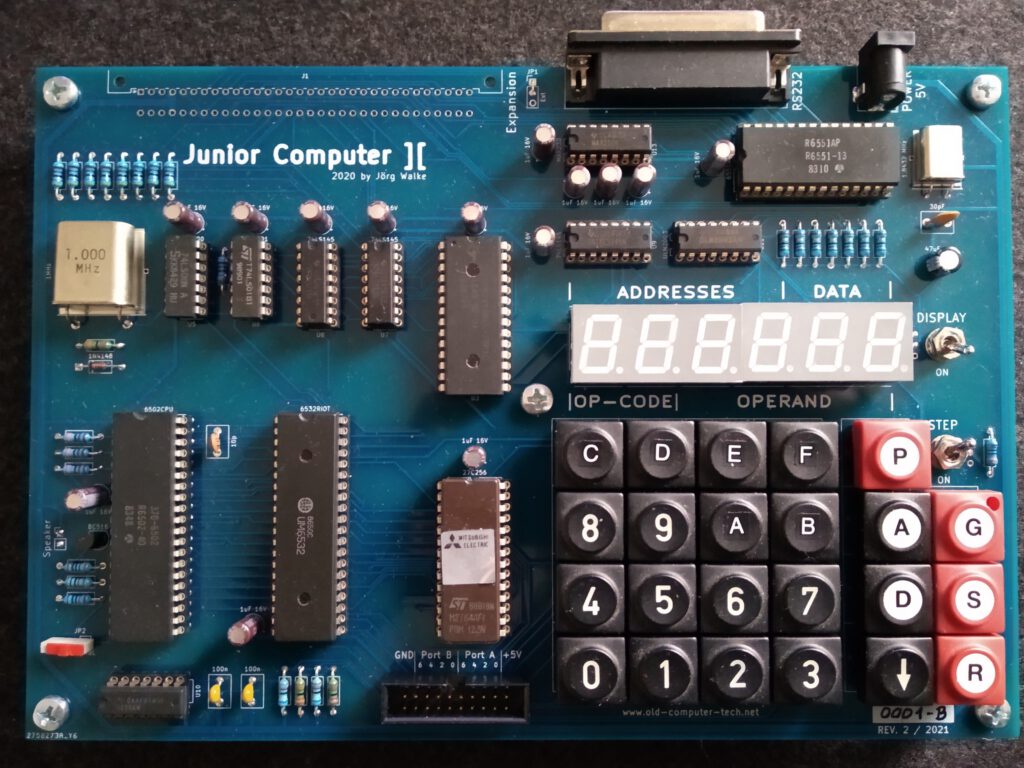
On the picture above, you can see the actual rev. 2 board of the Junior Computer ][.
The new revision 3 board has arrived!
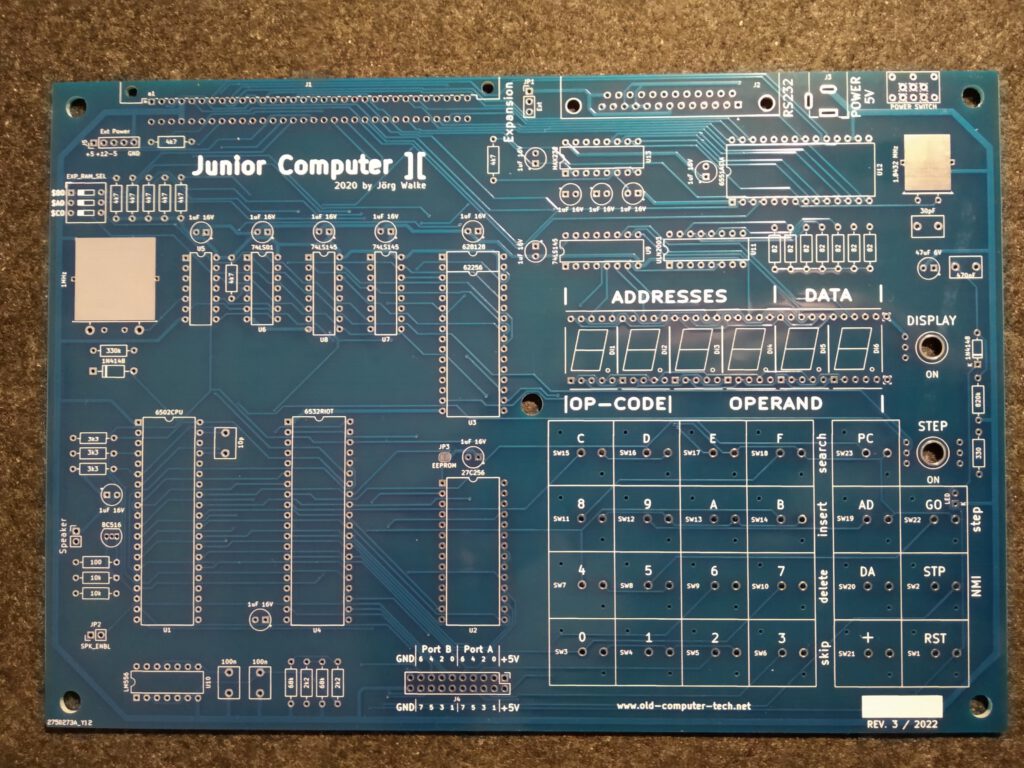
…all components assembled and soldered
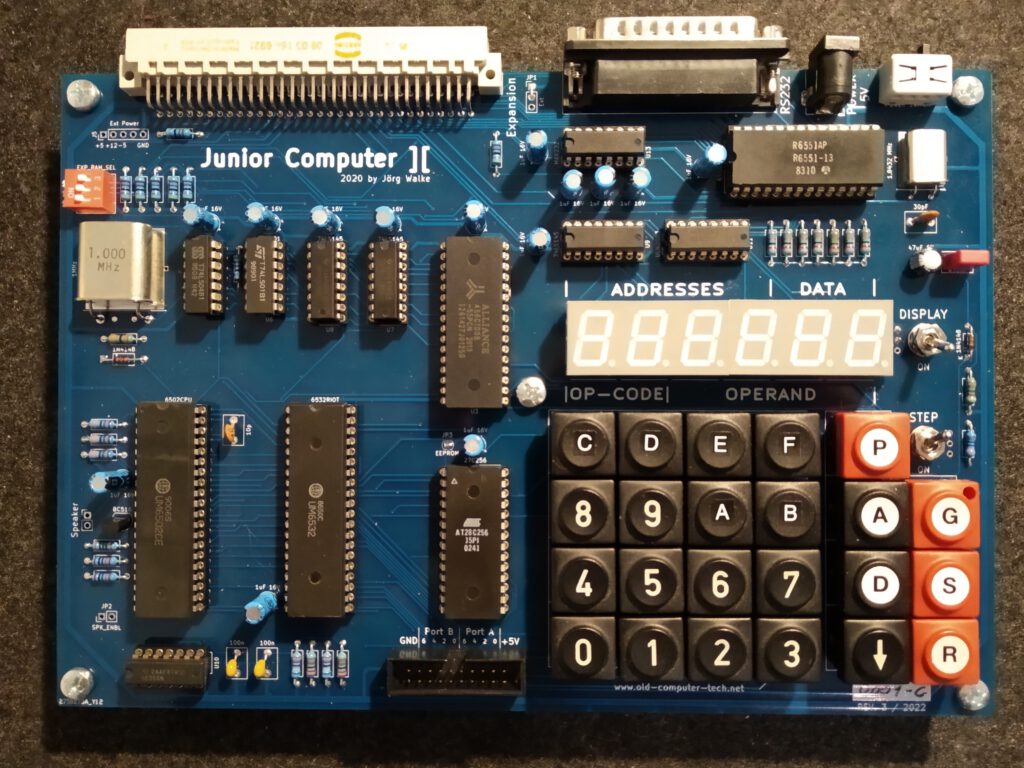
…and it works fine!
Its new features are: Up to 128KB RAM chips installable. 3 DIP switches to configure three additional 8KB RAM banks. Maximum of 51712 Bytes usable with 64KB RAM chip. Auto reset at power on. A power switch (oh yeah). Usable Memory for string buffers in the address area of the ACIA.
Edit August 2022: there is now also a I/O card and a bus card!
The Computer is divided into two parts. On the left side are the main computer components. The 6502 CPU, 6532 RIOT (RAM, Input/Output and Timer), ROM (8 KB EPROM), RAM (32 KB SRAM), the 1MHz quarz cristal and some 74LSxx logic chips for address decoding and clock generation. There is also a double timer chip on the lower left corner for debouncing the Reset (R) and Stop (S) keys. On the top lies the (in the picture not populated) expansions connector. And on the bottom side there is a connector for the two 8 Bit I/O ports coming from the 6532 RIOT. A small transistor amplifier on port B0 can be used to drive a loudspeaker, to make some simple noise.
The input/output components of the Junior are on the right side of the PCB. There is the hexadecimal keyboard, for entering the program addresses and data. And there are also some control keys. Above the keyboard is the six-digit, 7-segment display for showing the addresses and the data bytes as hexadecimal coded numbers. The display can also be switched off, if not needed. Keyboard and display is controlled by the two 8-bit I/O ports of the RIOT, by alternately polling the keyboard and repeatedly writing each single digit of the data to be shown on the display. On the top of the I/O side is the 6551 ACIA (Asynchronous Communications Interface Adapter) chip and a level shifter for the RS232 serial interface signals. The little quarts aside the ACIA is for the baud rate generation, which ranges from 50 to 19200 Baud.
I built the first prototype in July 2020 on a breadboard, followed by the rev. 1 PCB in August 2021.
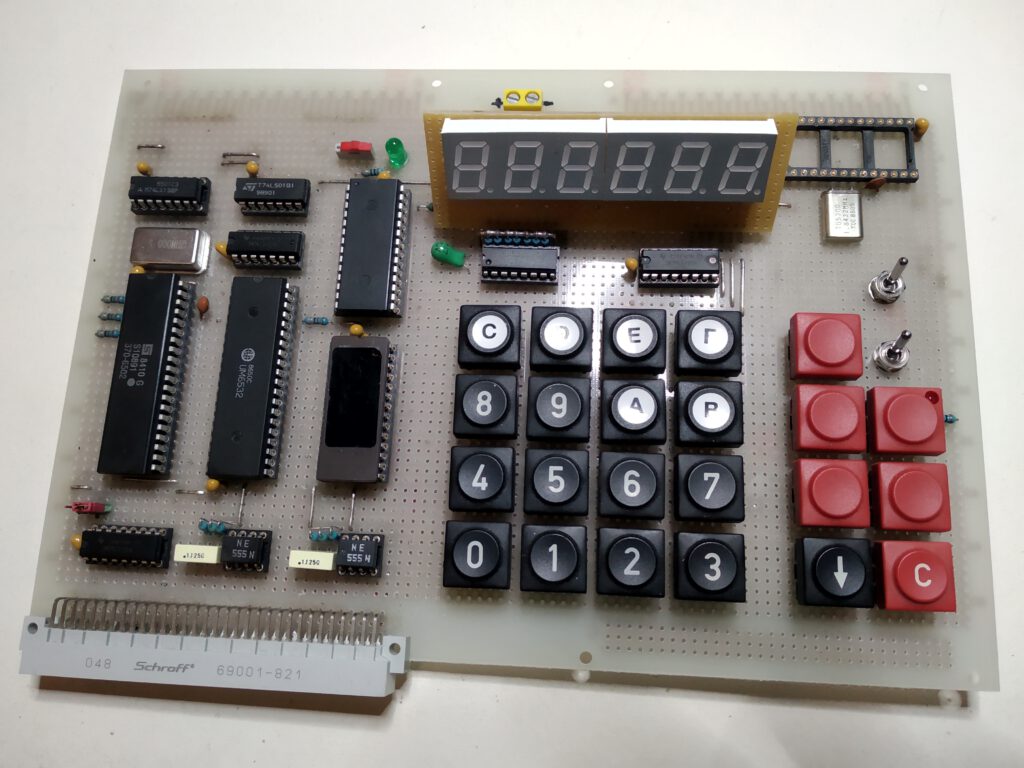
The rev. 2 board was necessary, because unfortunately the distances between the input keys were a little bit too narrow. Also the rev. 2 board had some issues. But it worked fine for me. After publishing the JC][ on the Classic Computing forum (www.classic-computing.de), I found some people who were interested in it. That charged me to make some further expansions and to make it a little bit more useful for others. The revision 3 board with some improvements is now on the way, as is new software.
The schematics and Gerber files for the PCB and of course the ROM images and the 6502 Assembler source code files are freely available on the download section. So feel free, to make your own Junior ][ and have some fun with 8 bits.
Programming the Junior Computer ][
Programming the Junior is quite simple:
Apply power and press the (R)eset switch. The display turns on and shows a random memory address (four digits) and its content (two digits). The Junior Computer ][ and its predecessor are both programmed in raw 6502 machine language. That is, each CPU command is entered in its numeric representation as a hexadecimal number. For example, 4c 00 F8 means: Jump (4C) to absolute location F800. 16-bit values such as memory addresses are written as the lowest byte first, so the byte representation 34 12 in memory represents the 16-bit value 1234 in hexadecimal.
To enter some data, you first have to type the address, were the data should be located. To do so, press the (AD)dress key and type in the four hexadecimal digits (16 bits) of the memory address location. Then press the (DA)ta key and type the two hexadecimal digits (8 bits) of the data. If you make a mistake, simply type in the new value. To enter data in the immediately following address, press the + Key (in my picture above, this is the down arrow key – because I just hadn’t a + keycap) and enter the new data.
To examine any address, you just have to press the (AD)dress key again and type in the address you want to visit. By pressing the + key, the direct successor address is displayed. Pressing the GO key executes the program at the currently displayed memory address. There is also a Edit mode where you can insert and delete data, and automatically calculate branch and jump addresses. To use this mode, please refer to the Junior Computer Book 2.
Another way to enter programs is, to use the extended (terminal) print monitor program. First you have to connect a VT100 compatible terminal to the RS232 interface and set it to
9600 Baud, 8 data bits, no parity, 1 stop bit
To start the monitor program, press the (AD)dress key, type in the address F800 and press GO. On the terminal display, you should now see something like this:
Junior Computer ][ Print Monitor 2021 by Joerg Walke (M)onitor (L)oad (S)ave (A)ssembler (B)asic ?
For now Monitor is the only selectable choice (but the rest will come soon, hopefully), so type M on the terminal keyboard to enter the Hex Monitor. The Display is cleared and a * prompt is shown. All input is non case sensitive, so typeing M or m is the same.
To examine the content of a single address, just type in the address as a hexadecimal number and press the Return key. The address and its current content is then shown.
*F800 F800- 4C
To view a hole block of data, enter the start-address and the end-address of the block to be shown, divided by a . (dot).
*F800.F808 F800- 4C DC F8 A4 F8 B1 F6 E6 F808- F8
To enter new data, type in the address where the data should be written, followed by a : (colon), followed by the single data bytes.
*200: 4C 00 F8 0200- 03
Execute a program by typing the start address followed by a G
*0200G 0200- 4C
To exit the Monitor and to go back to the main screen of the monitor type
*X
and then press the Return key.
If you want to go back to the standard Junior Monitor just enter
*1C1DG
(followed by Return) which leaves the terminal screen as a Zombie without a function and enables the 7-segment display and the hex keyboard.
That’s it. If you are interested in learning more about programming the 6502 and the Junior Computer, please refer to the MOS 6502 Datasheet and the Junior Computer books.
Downloads Junior Computer ][
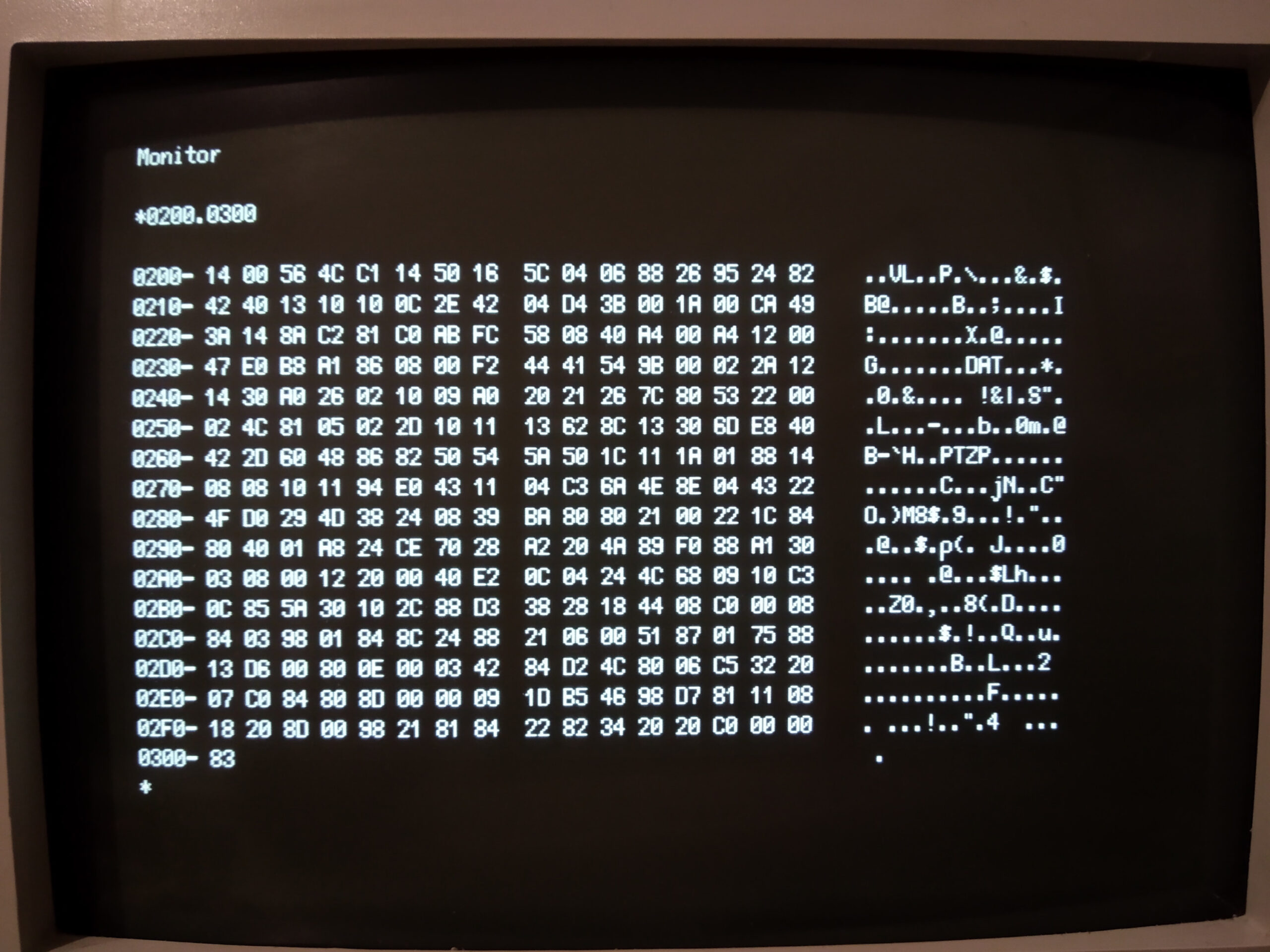
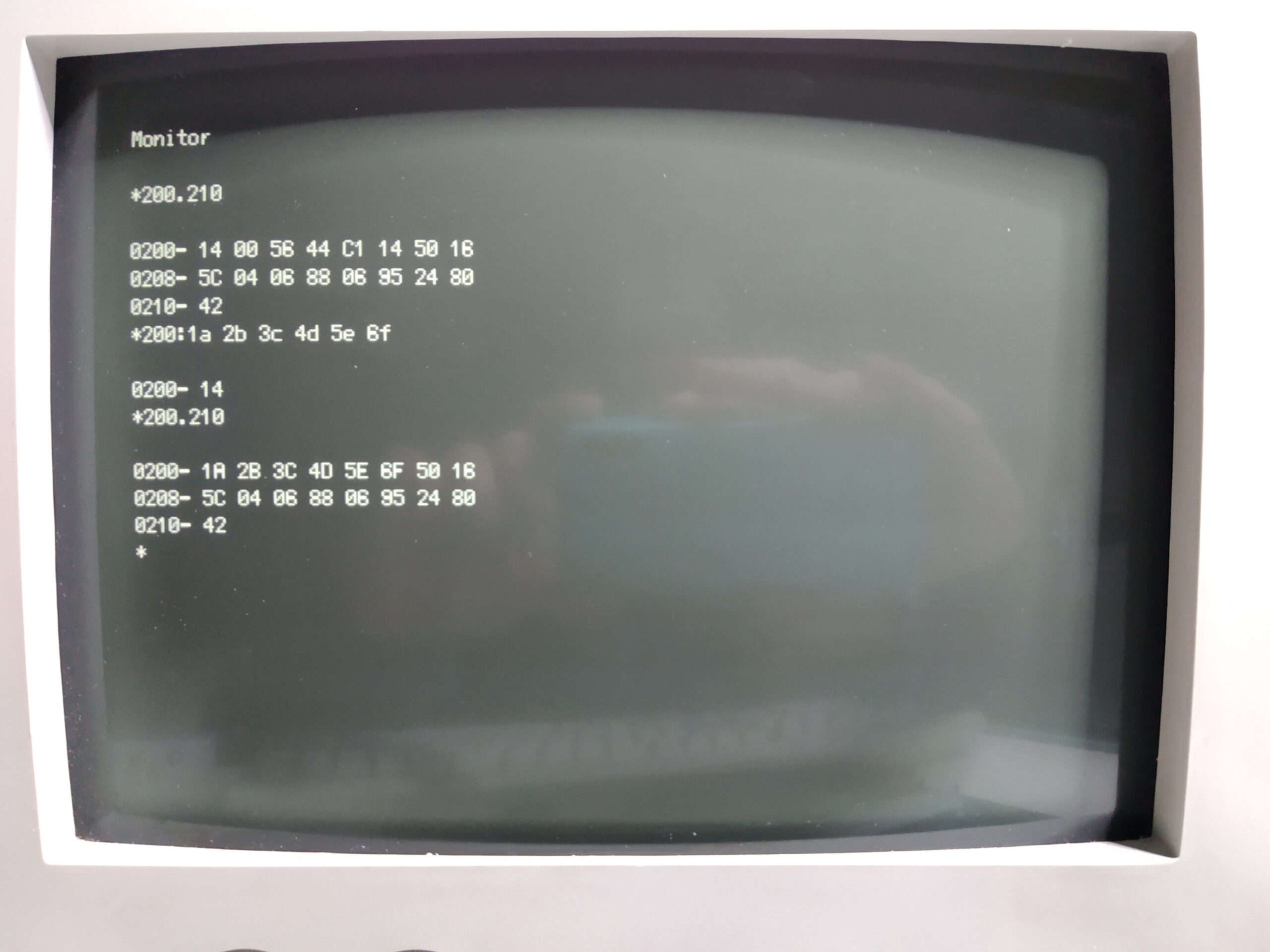
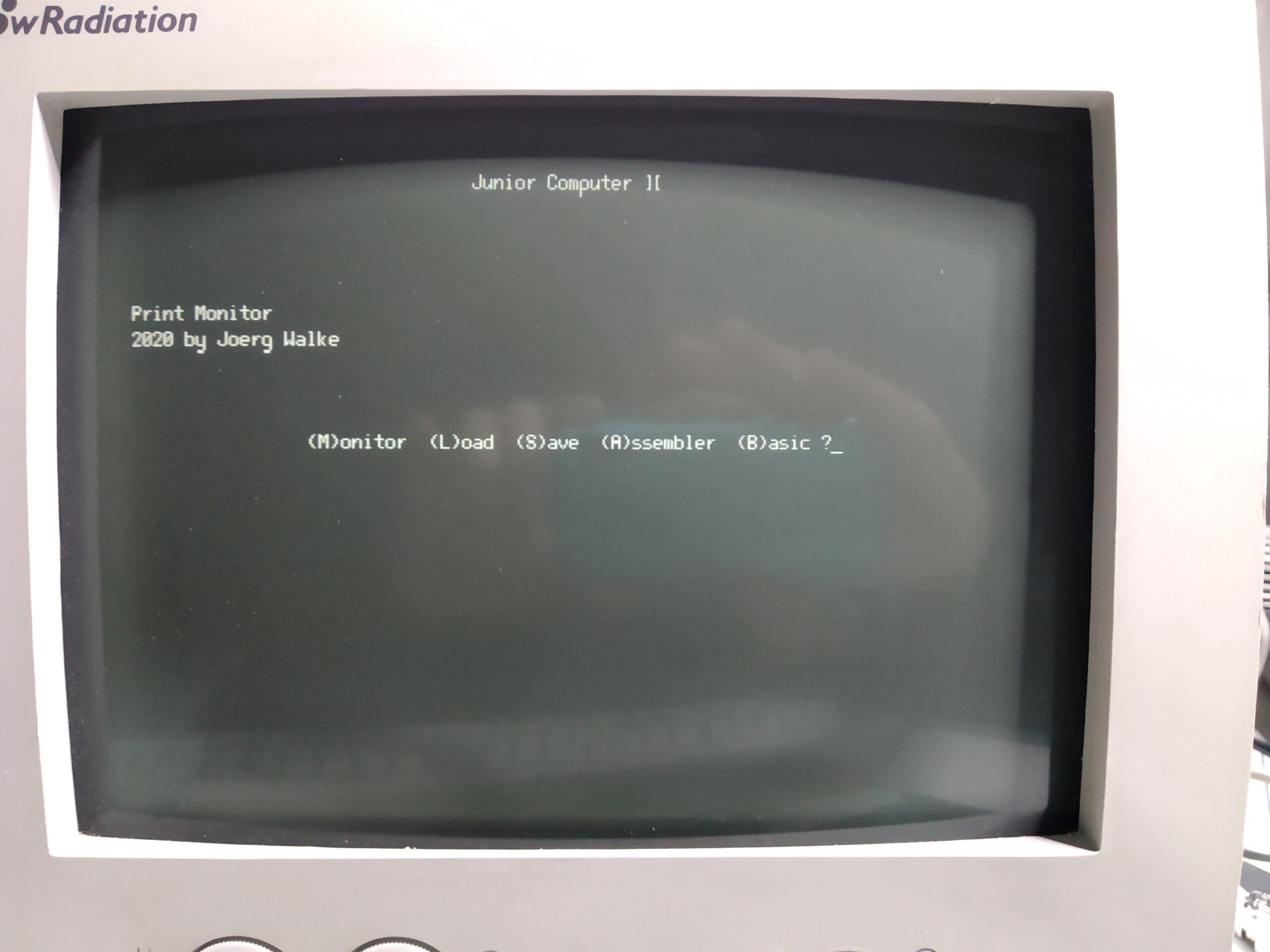
See also:
Elektor Junior ASSM/TED
KIM-1 Macro Assembler Editor
MAE ASSM/TED CW Moser
SYM-1 RAE
Elektor Junior Paperware 3 in German!
Thanks to Martin Seine I have added the Paperware 3 in German book to the Junior book collection.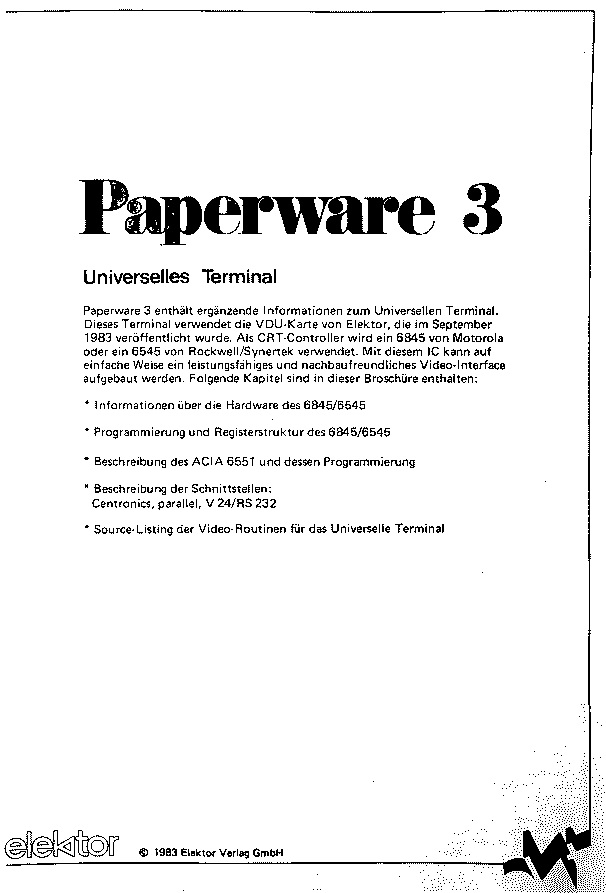
See also:
Focal-65 V3D for TIM and KIM-1
John Bell Engineering catalogs
New KIM-1 info and more
KIM-1 Simulator simple demo
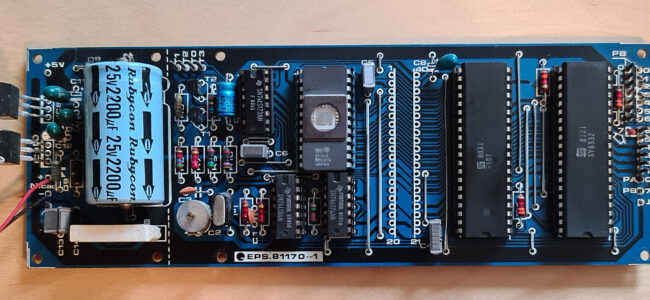
Elektor 6502 clock
In 1981 and 1982 the magazine Elektor (Elektuur) published a small 6502 system. Small since it only contained a 6502, a 6532 RRIOT and a 2716 2K EPROM and some logic IC’s and powersupply, all on a small PCB.
Several applications around this baord were publsihed, like a DCF77 clock, a general purpose clock, and a darkroom computer. Also a talking clock baord, around the speech IC UAA1003 was published.
Recently I obtained a DCF77 talking clock system, and I took it apart and cleaned it up to experiment with the boards, and I do not want to use the heavy lineair power circuits anymore. See the bottom of the page how it looked in the original form.
Memory map
Memory map, only decoded up to A11, so everything is mirrored in the 64K memory space in 4K blocks.
0000 - 007F zeropage/stack 0080 6532 registers 0400 latch 4 bit output 0800 - 0FFF 2k ROM 2716 FFFA - FFFF vectors in ROM
Magazine articles
Elektuur/Elektor published the articles around this 6502 system in 1981 and 1982. Not all were published everywhere. The DCF77 clock was not published for example in the UK (and that makes sense, nor reception there from Frankfurt). Only in the Dutch articles, sources were published in addition to the hex dumps of the firmware.
Here the scanned articles
Listing of DCF77 clock
Listing of changes for alarmclock
Original DCF77 housing
See also:
Elektor Junior ASSM/TED
KIM-1 Macro Assembler Editor
MAE ASSM/TED CW Moser
SYM-1 RAE
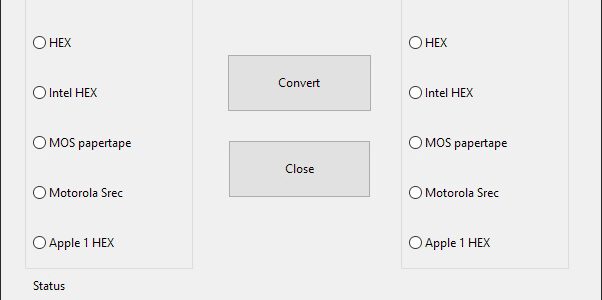
PC utilities updated
The PC utilities page has seen an update of th4 Conversion hex formats utility.
Programs to manipulate the binary and hex formatted files of interest for SBC owners. Intel hex, MOS papertape, Motorola S-record, binary, hex conversion fort eh 8 bit world.
Runs on Windows, Linux, Mac due to Lazarus and Freepascal. Source included.
See also:
Focal-65 V3D for TIM and KIM-1
John Bell Engineering catalogs
Cosmicos donation
New KIM-1 info and more
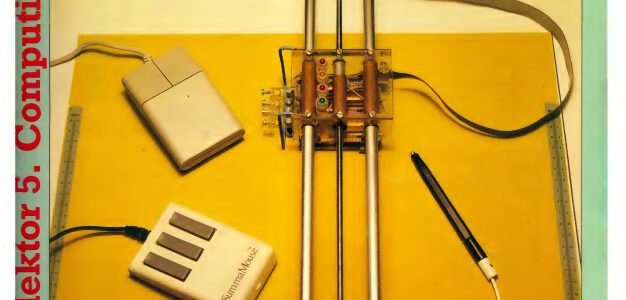
Elektor Computing 5 German
And have a look at the EC65 Z80 card page also

